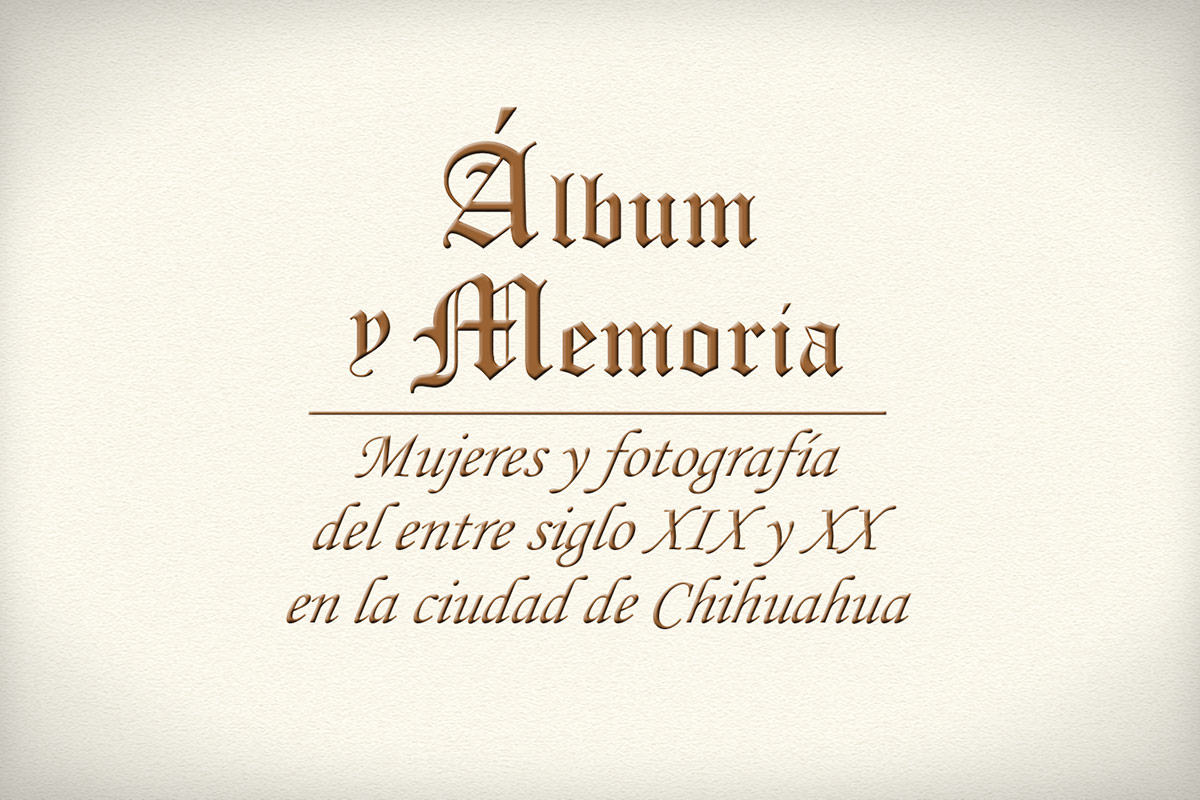
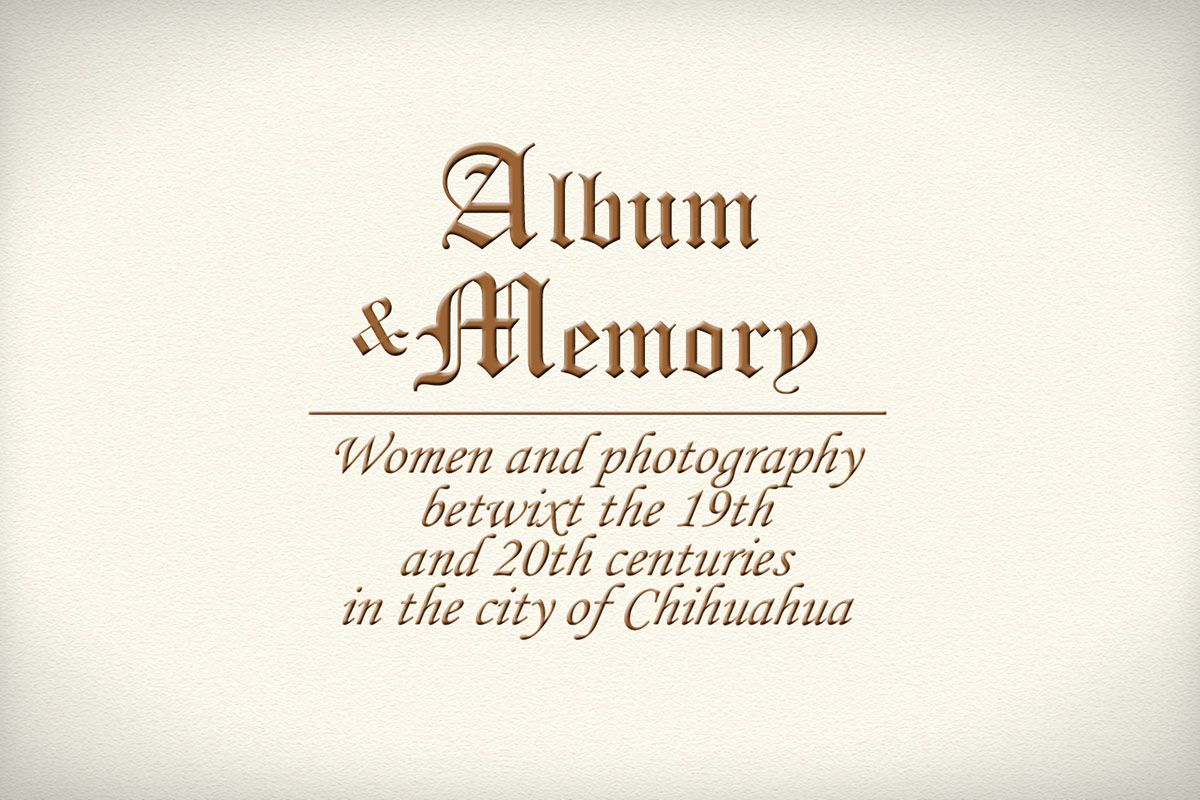
[...] algún lugar secreto de su cuerpo le enseña desde ahora a reclamar su parte
Valeria Luiselli, Los ingrávidos
[...] some secret place in her body teaches her from now on to claim her share of that which belongs to both of us, that which we take away from each other every day. The threads that hold us and separate us.
Valeria Luiselli, The Weightless
Durante el prolongado tiempo en que se introdujo la fotografía en la ciudad de Chihuahua, los usos y significaciones que algunas mujeres les dieron a sus retratos se observan a través de sus rastros. Algo de la cotidianeidad del entre siglo XIX y XX es aprehensible en las prácticas en torno a la fotografía, como huellas de los afectos y sus efectos en quienes hacían fotografías, se retrataban y eran fotografiadas.
During the long time in which photography was introduced in the city of Chihuahua, the uses and meanings that some women gave to their portraits are observed through their traces. Something of the everyday life of the 19th and 20th centuries is understandable in the practices around photography, as traces of affections and their effects on those who took photographs, had their portraits taken, and were photographed.
Cámara
Hacía los últimos años de la década de 1860 arribó a la ciudad de Chihuahua la familia Addis, compuesta por el matrimonio de Sarah Hillis Short (1850 - 1913) y Alfred Shea Addis, y sus hijos Judge e Yda. Alfred Shea operaba como cualquier otro fotógrafo itinerante de su época al seguir las caravanas comerciales hacia ciudades y comunidades donde pudiera ofrecer sus servicios. Los integrantes de la familia Addis ayudaban en el negocio, como cualquier galería fotográfica de propietario con esposa e hijos.
Camera
Towards the end of the 1860s, the Addis family arrived in the city of Chihuahua, made up of Sarah Hillis Short (1850 - 1913) and Alfred Shea Addis, and their children Judge and Yda. Alfred Shea operated like any other traveling photographer of his time by following trade caravans to cities and communities where he could offer his services. Members of the Addis family helped in the business, like any photo gallery owner with a wife and children.
Cámara
Sarah habría aprendido el oficio de su padre, el fotógrafo Thomas Joseph Short, antes de casarse con Alfred en 1856 y emprender la trashumancia que los traería a México entre 1867 y 1872. Las huellas de lo Addis no son del todo claras durante ese periodo, pero se sabe que estuvieron en Chihuahua y Mazatlán en varias ocasiones. Regresaron a Chihuahua a finales de 1882 a establecer la “Galería Fotográfica Americana”. No es casual, pues la reciente inauguración del segmento del Ferrocarril Central Mexicano que conectaba con Norteamérica, y luego con la Ciudad de México, posibilitó una modernización y un comercio fotográfico que no había en su primera visita de 1868.
Camera
Sarah would have learned the trade from her father, the photographer Thomas Joseph Short, before marrying Alfred in 1856 and undertaking the transhumance that would bring them to Mexico between 1867 and 1872. The traces of the Addis are not entirely clear during that period, but it is known that they were in Chihuahua and Mazatlán on several occasions. They returned to Chihuahua at the end of 1882 to establish the “American Photographic Gallery.” It is not a coincidence, since the recent inauguration of the segment of the Mexican Central Railway that connected with North America, and then with Mexico City, made possible a modernization and a photographic trade that did not exist on their first visit in 1868.
Cámara
La inesperada muerte de Alfred en 1886 dejó a Sarah al frente del estudio que se conocía como “Fotografía Americana”. Desde el número 2 de la calle Libertad siguió trabajando e identificándose como Mrs. A.S. Addis (Sra. Alfred Shea Addis), una costumbre social que respondía a la subordinación legal de la mujer al hombre y su rol como “cabeza de familia”. En su gabinete los Addis produjeron retratos y vistas urbanas, las imágenes fotográficas características de la modernidad. Sus retratos para las élites, registros de grupos escolares y venta de “tipos populares” materializaron nuevas formas de saber.
Camera
Alfred's unexpected death in 1886 left Sarah at the head of the studio that was known as “American Photography.” From number 2 Libertad Street she continued working and identifying herself as Mrs. A.S. Addis (Mrs. Alfred Shea Addis), a social custom that responded to the legal subordination of women to men and their role as “head of the family.” In their studio, the Addis produced portraits and urban views, the characteristic photographic images of modernity. His portraits for the elites, records of school groups, and sales of “popular types” materialized new ways of knowing.
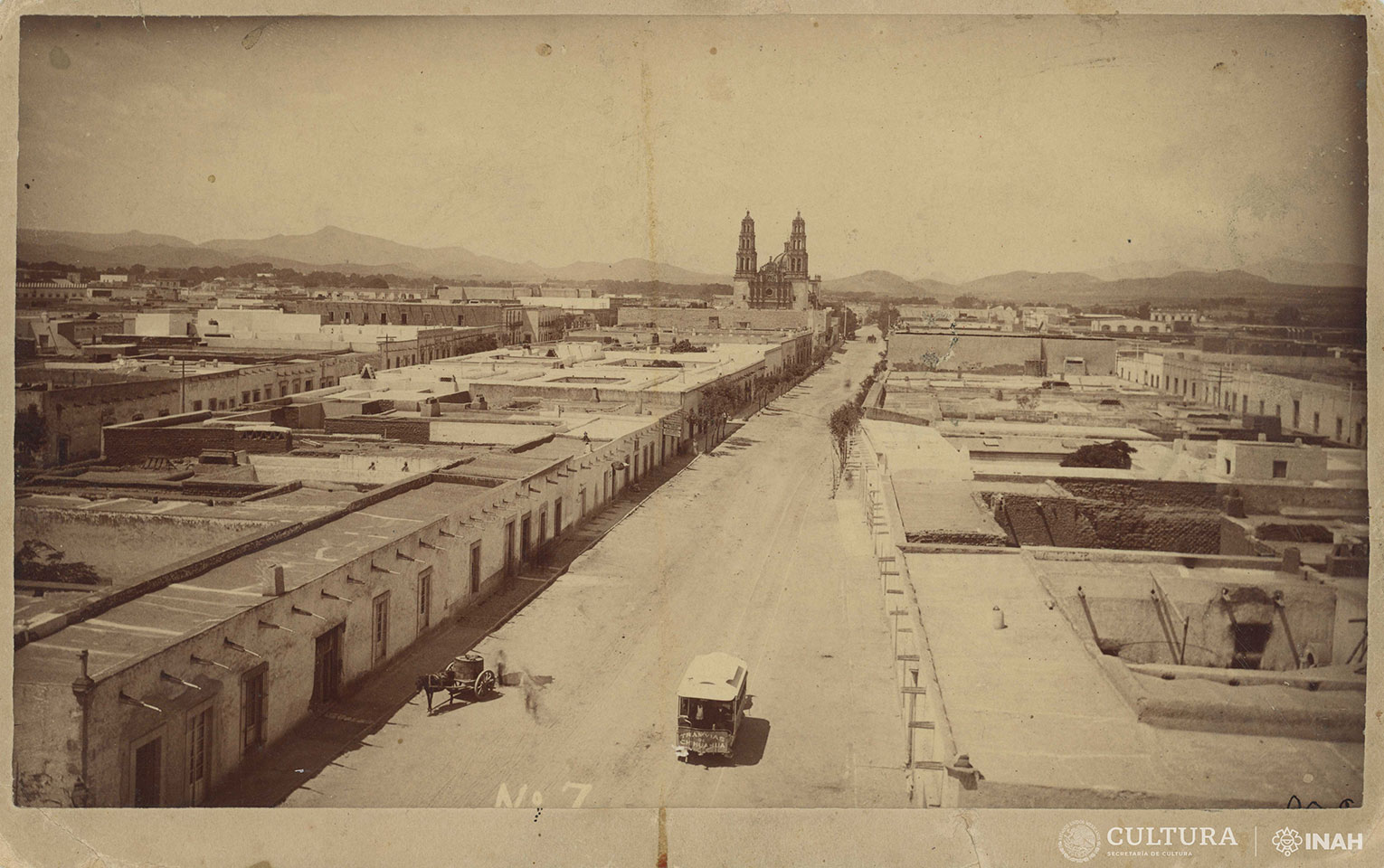
Vista de la calle Libertad
ca.1890
Colección Paola Juárez / Reidezel Mendoza Sarah Hillis Short Addis
Libertad street
ca.1890
Paola Juárez / Reidezel Mendoza Collection
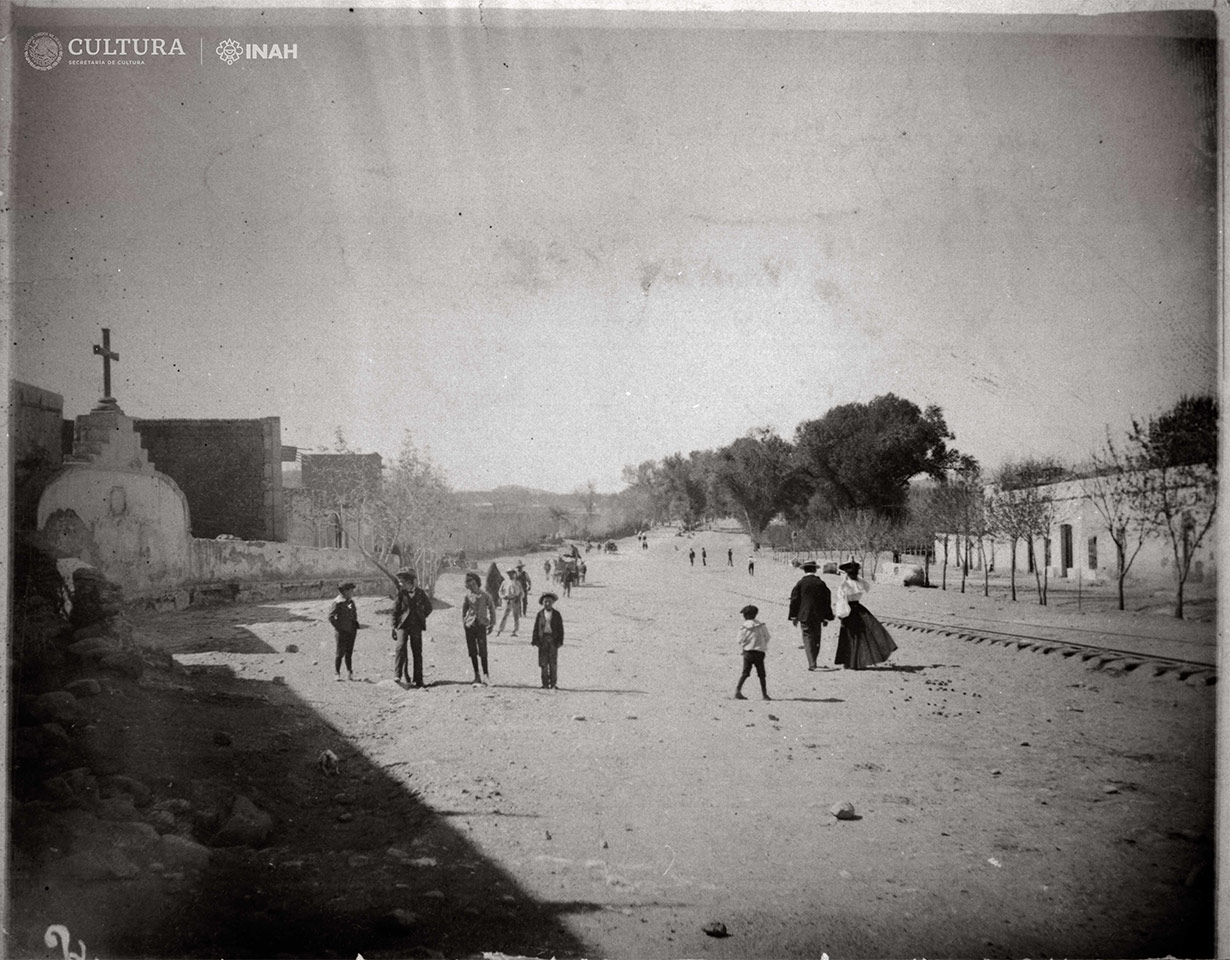
Vista de la avenida de las Quintas y alameda de Guadalupe
ca.1900 Sarah Hillis Short Addis (attributed)
Avenue of the Mansions and Guadalupe Promenade
ca.1900
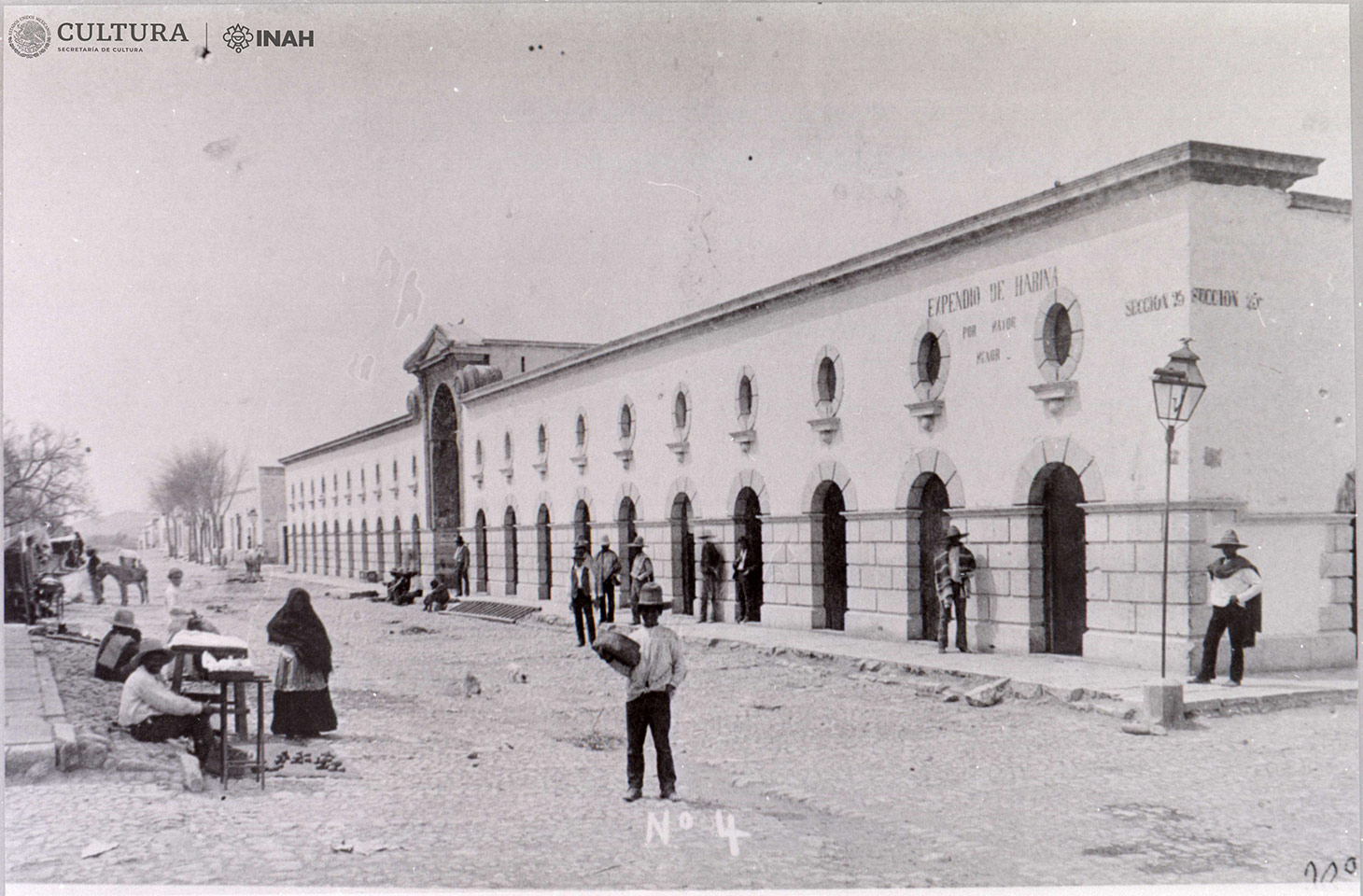
Vista del mercado de "La Reforma"
ca.1890 Sarah Hillis Short Addis (attributed)
"La Reforma" Market
ca.1890
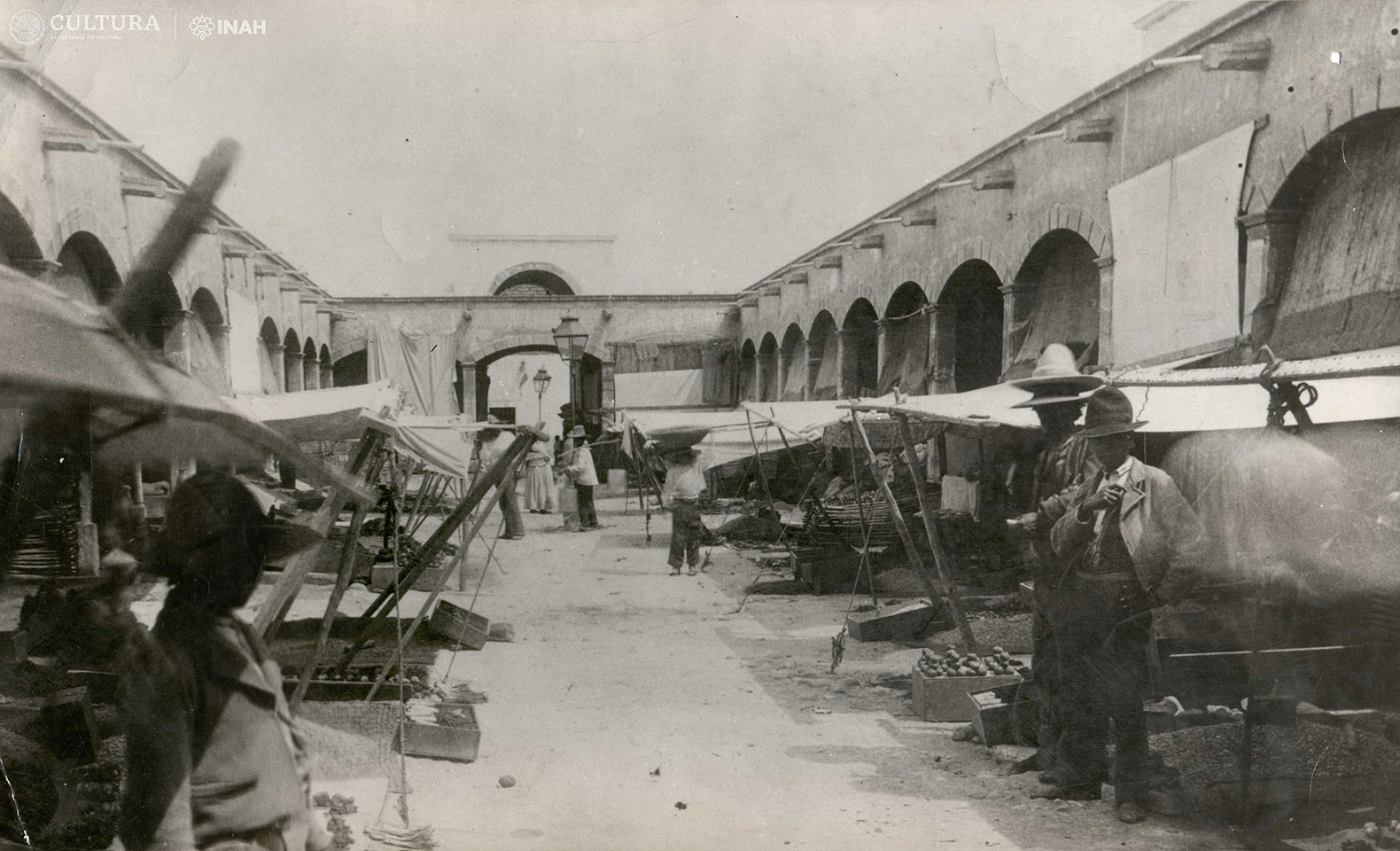
Interior del mercado de "La Reforma"
ca.1890 Sarah Hillis Short Addis (attributed)
"La Reforma" Market interior
ca.1890
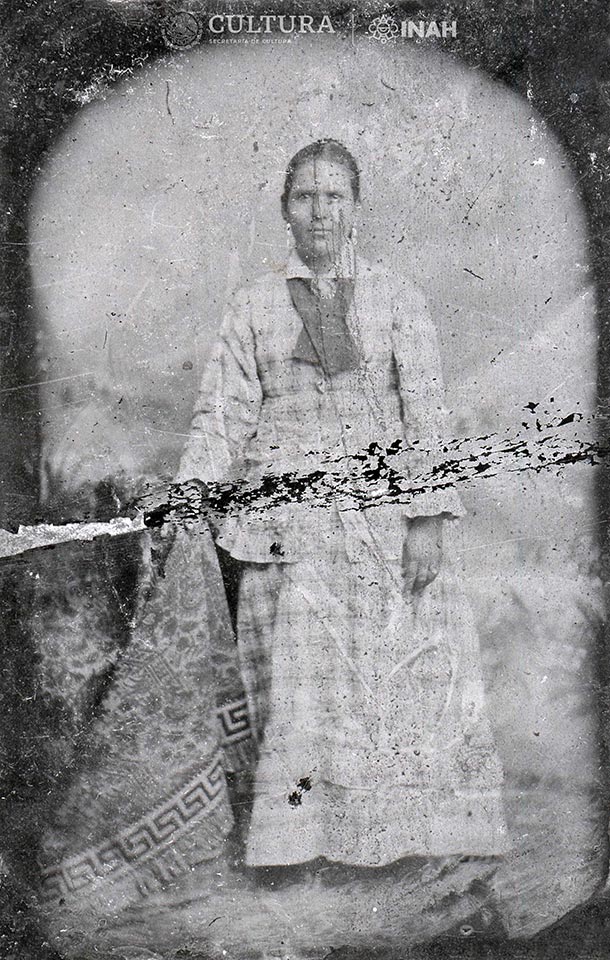
Mujer junto a mesa
ca.1868 Sarah Hillis Short Addis (attributed)
Woman beside table
ca.1868
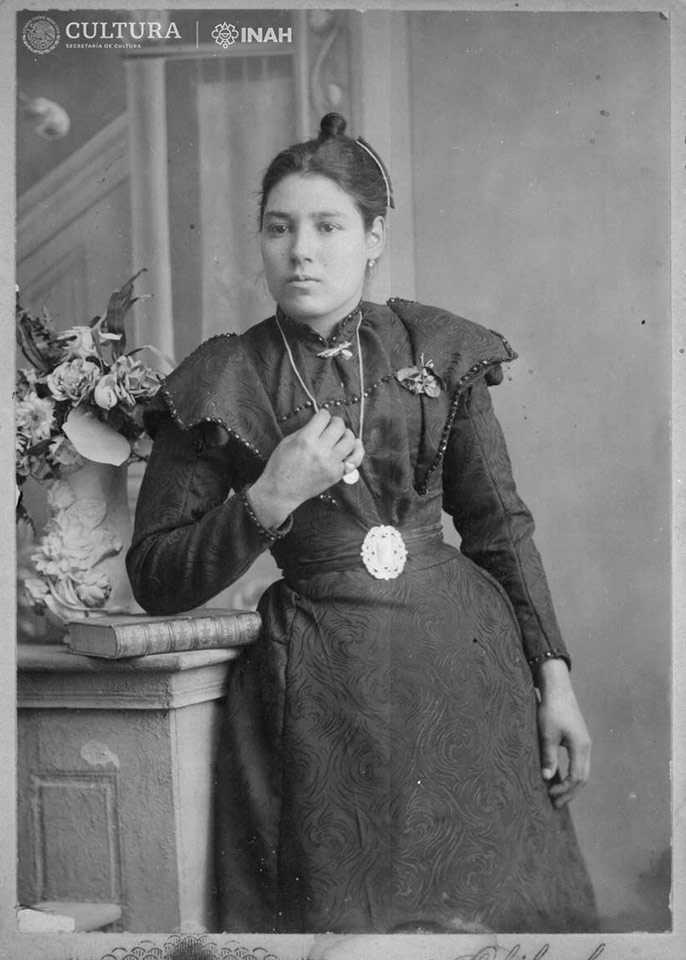
Mujer con flores y libro
ca.1901 Sarah Hillis Short Addis (attributed)
Woman with flowers and book
ca.1901
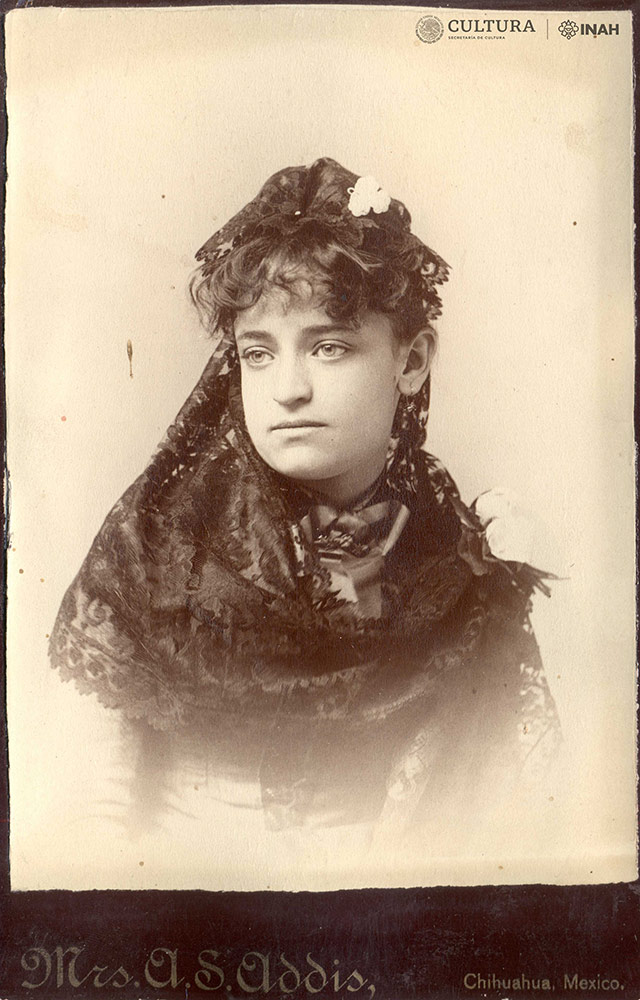
Laurencia Chávez
1889 Sarah Hillis Short Addis
Laurencia Chávez
1889
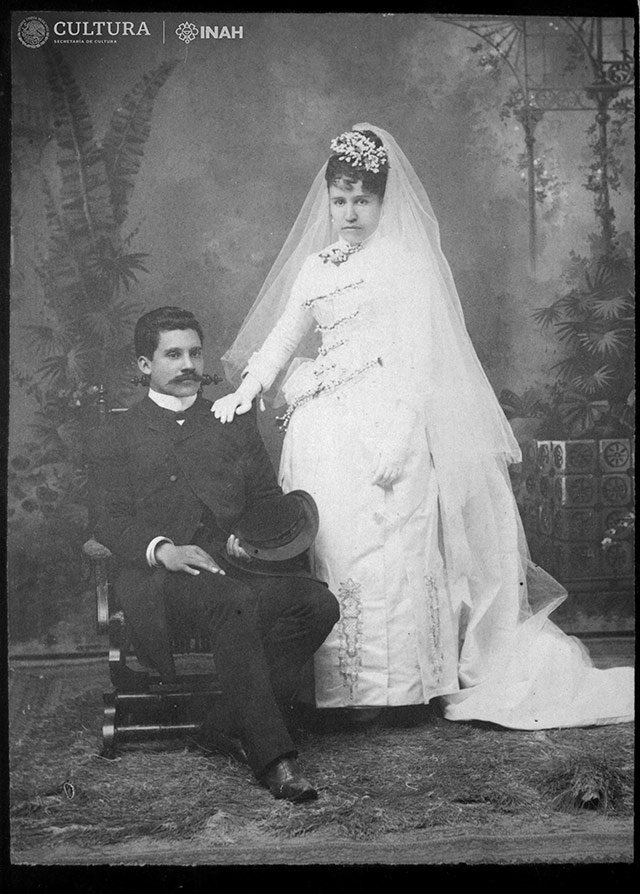
Ignacio Velázquez y Refugio A.
ca.1889 Sarah Hillis Short Addis (attributed)
Ignacio Velázquez and Refugio A.
ca.1889
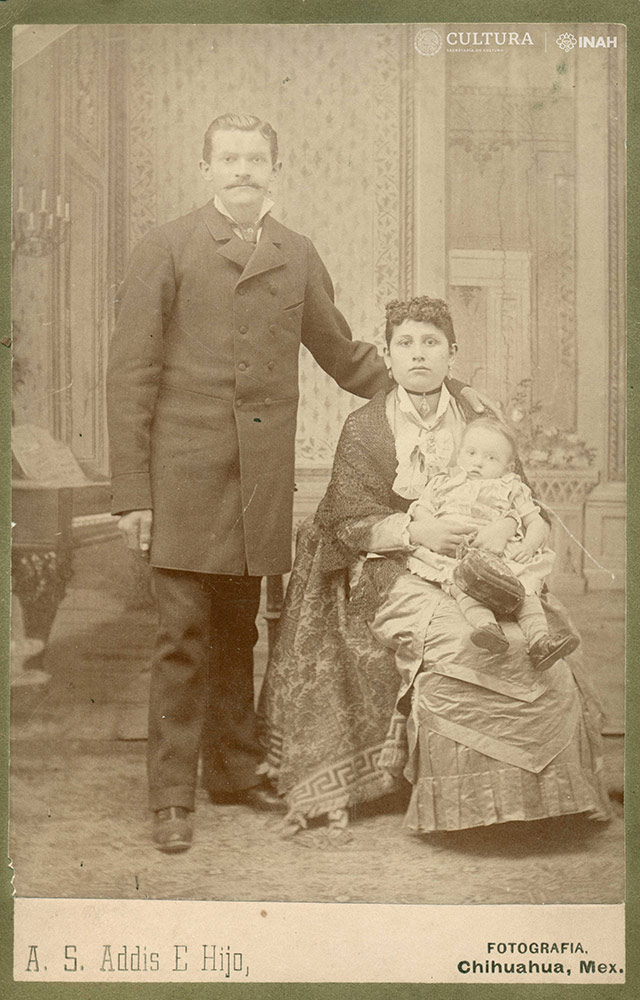
Pareja con bebé
ca.1880 Alfred Shea Addis
Couple with baby
ca.1880
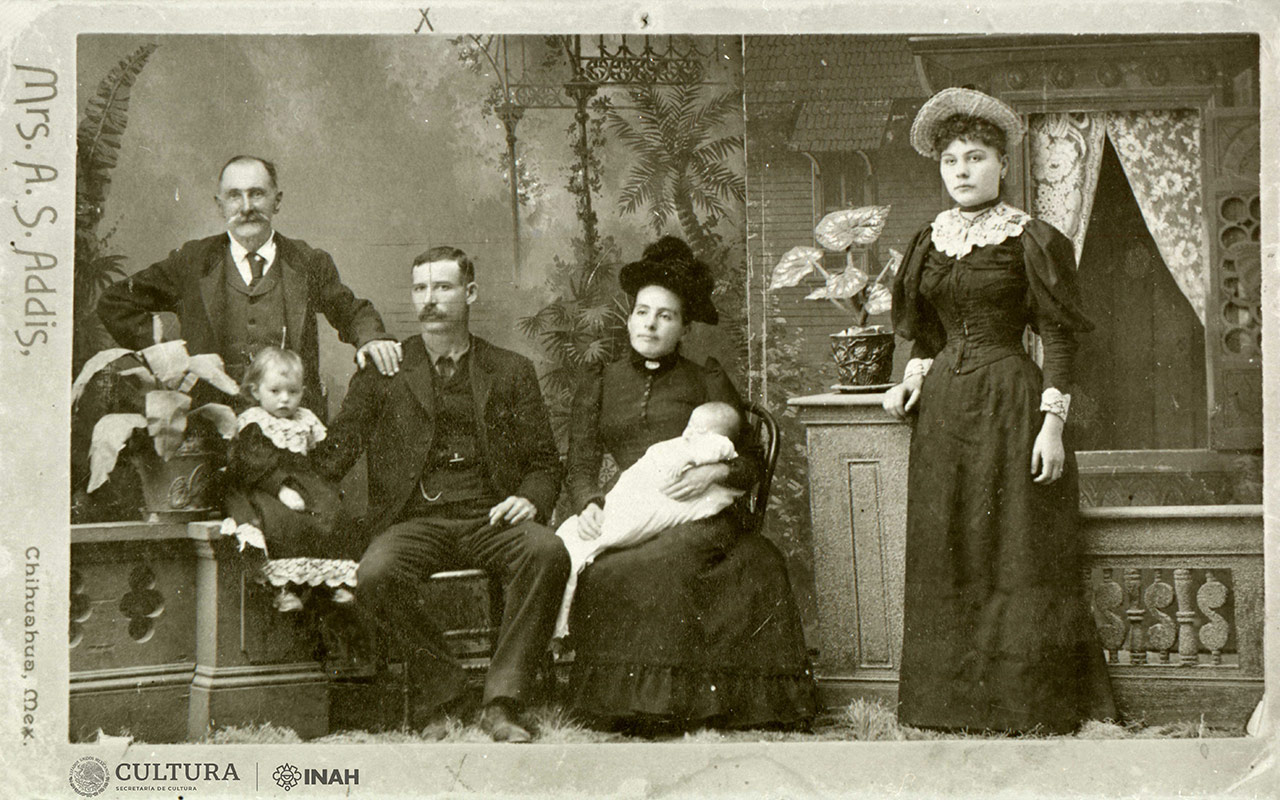
Familia McLean del Val
1893 Sarah Hillis Short Addis
McLean del Val family
1893
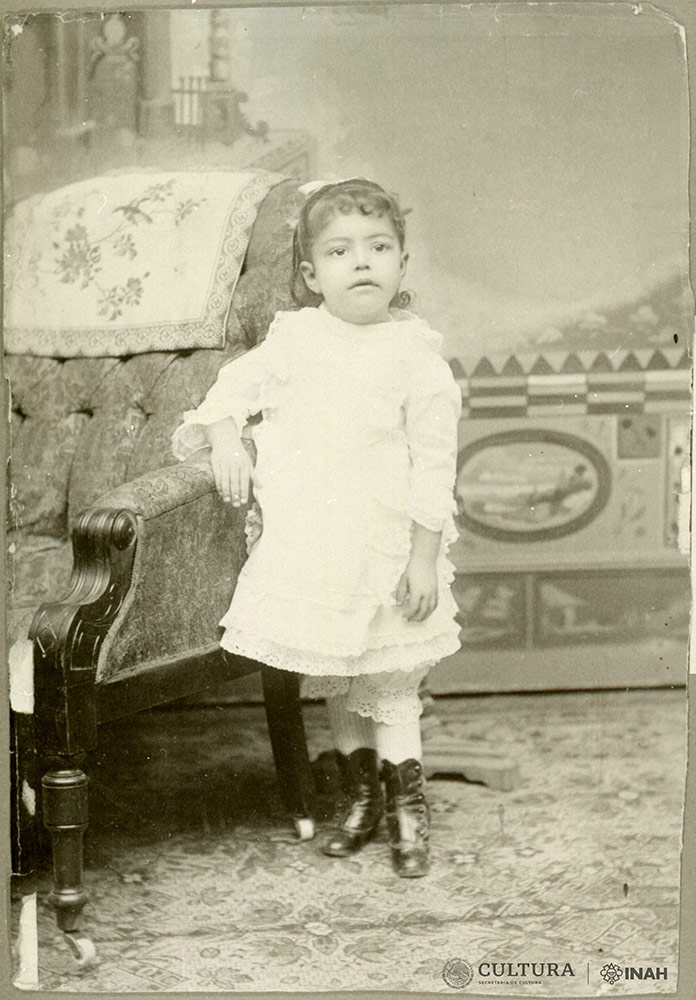
Concepción Güereque González
1886 Sarah Hillis Short Addis (attributed)
Concepción Güereque González
1886
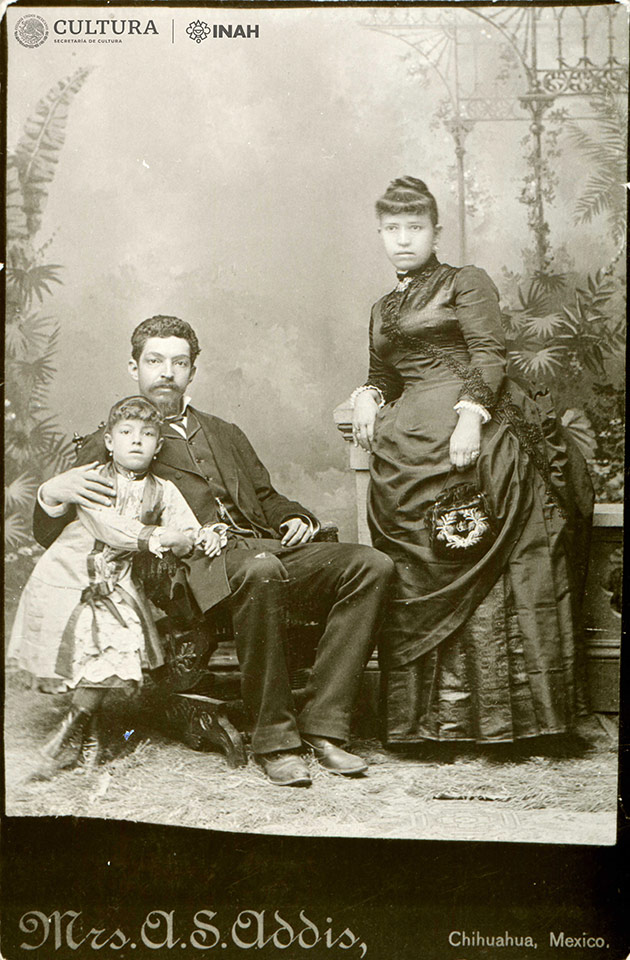
Concepción Güereque González, Inés Güereque y Dolores González
ca. 1887 Sarah Hillis Short Addis
Concepción Güereque González, Inés Güereque y Dolores González
ca. 1887
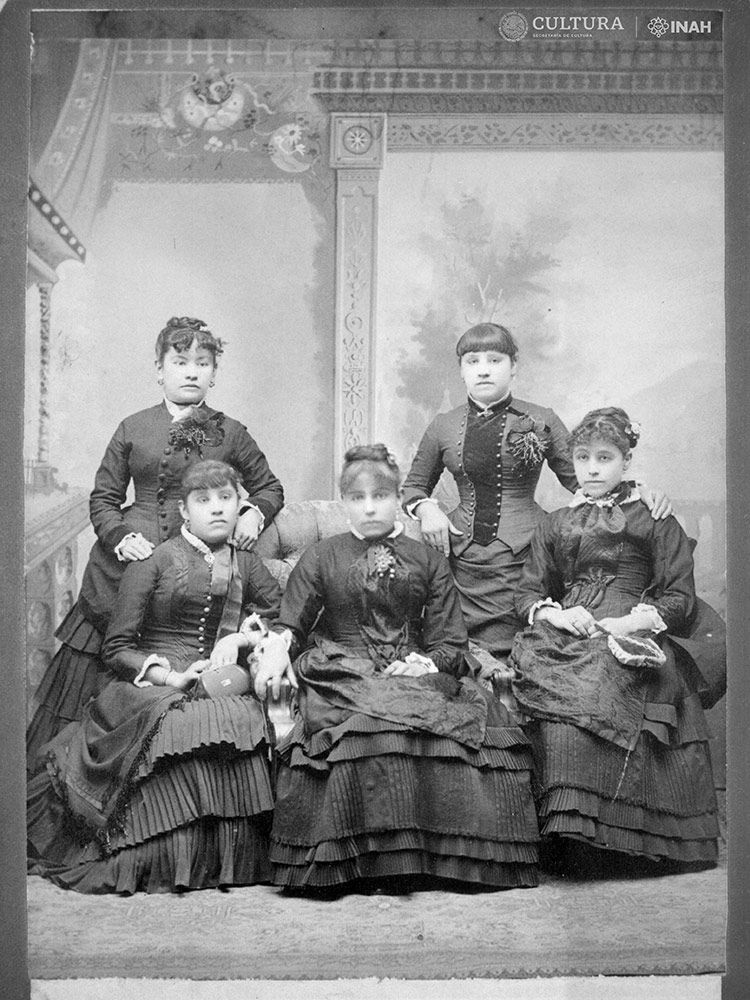
Grupo de jovencitas
ca. 1885 Alfred Shea Addis
Group of young ladies
ca. 1885
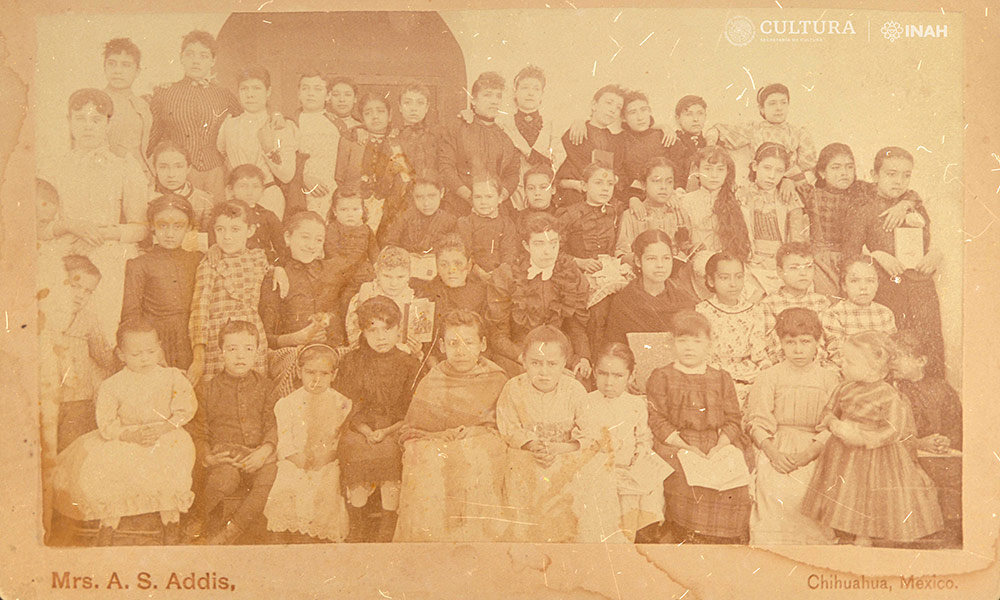
Grupo escolar
ca. 1896 Sarah Hillis Short Addis
School group
ca. 1896
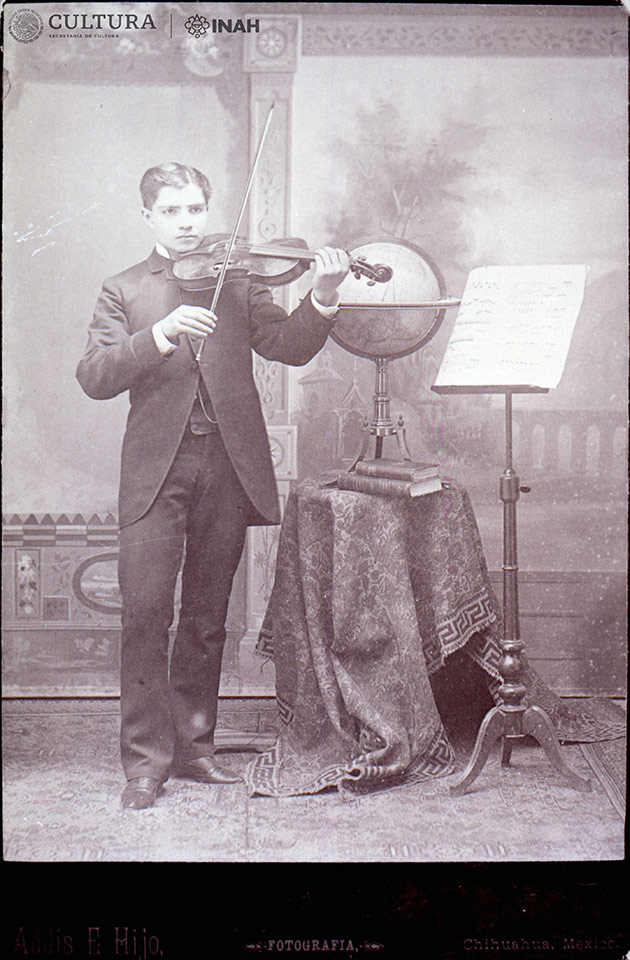
Ramón G. Márquez
1886 Sarah Hillis Short Addis
Ramón G. Márquez
1886
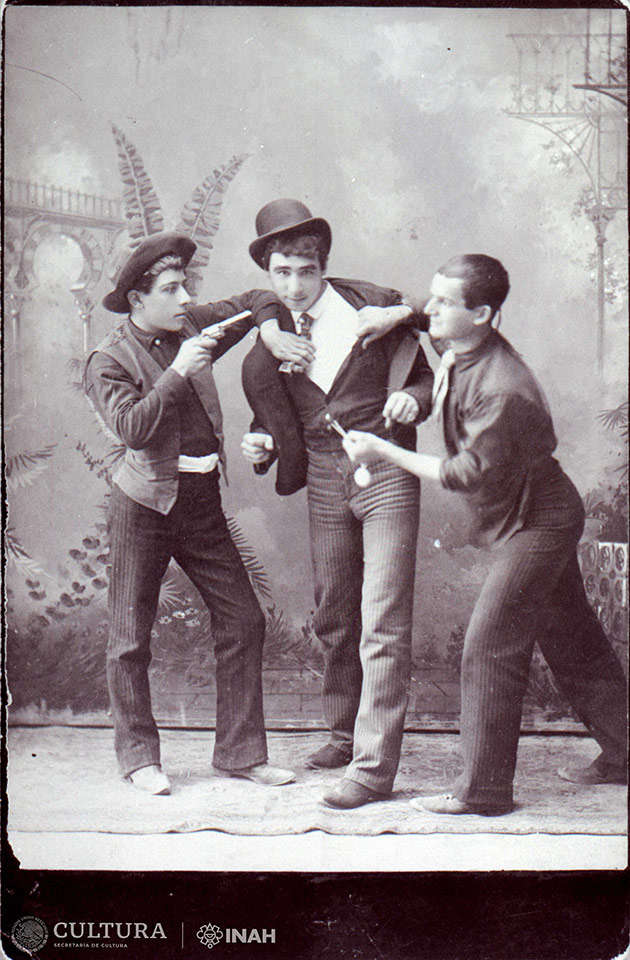
Pompeyo Ramos, Montserrat Alberto “cubanito” Pujol y Manuel Pomares simulan asalto
ca.1890 Sarah Hillis Short Addis (attributed)
Pompeyo Ramos, Montserrat Alberto “cubanito” Pujol and Manuel Pomares act out a mugging
ca.1890
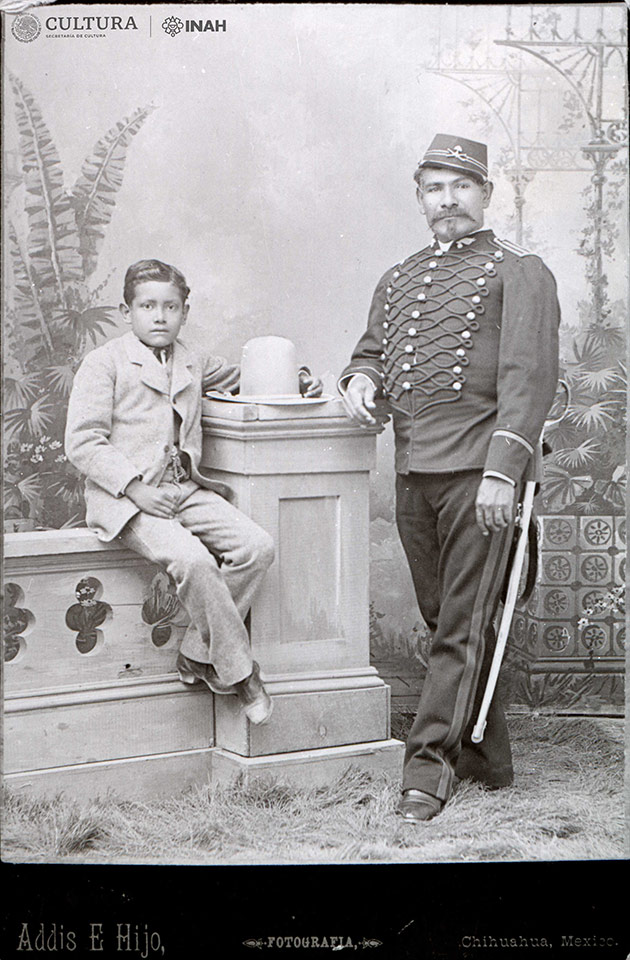
Marcelo Hurtado y niño
1886 Sarah Hillis Short Addis
Marcelo Hurtado and child
1886
Álbum
Los álbumes fotográficos fueron artefactos de lujo especialmente diseñados inicialmente para resguardar cartes de visite bajo broches o cerradura. Este indicio de privacidad y el ámbito doméstico que habitaban las mujeres hicieron del álbum familiar un espacio de creación y resguardo, de expresión de su inteligencia e intuición, de su estilo cognitivo comprometido emocionalmente, relacional y orientado hacia los valores del cuidado.
Album
Photographic albums were luxury artifacts initially specially designed to protect cartes de visite under clasps or locks. This indication of privacy and the domestic environment that the women inhabited made the family album a space of creation and protection, of expression of their intelligence and intuition, of their cognitive style that was emotionally committed, relational and oriented towards the values of care.
Álbum
La cercanía y dependencia emocional mutua de la relación íntima entre madre e hija yacía en el corazón de este mundo femenino. La simpatía y comprensión de estas relaciones madre-hija posibilitaban el sistema de aprendizaje como ama de casa y la maternidad. Esta dependencia mutua y ese profundo afecto teñía el mundo de las redes de apoyo y los rituales. Entre estos ritos se encontraba ordenar y hojear el álbum familiar. Un espacio de posibilidad donde se despliega el poder creador de esta facultad altamente desarrollada en las mujeres.
Album
The closeness and mutual emotional dependence of the intimate relationship between mother and daughter lay at the heart of this feminine world. The sympathy and understanding of these mother-daughter relationships made the learning system as a housewife and motherhood possible. This mutual dependence and deep affection colored the world of support networks and rituals. Among these rituals was organizing and leafing through the family album. A space of possibility where the creative power of this highly developed faculty in women is displayed.
Álbum
Si bien, las colecciones de retratos sólo eran contempladas por aquellas personas a las que las propietarias de los álbumes seleccionaban por considerarlas dignas de compartir con ellas la colección de fotografías que tenían, las mujeres hilaron con ellas los rasgos distintivos de la esfera social a la que pertenecían en las páginas de sus álbumes y confeccionaron una memoria familiar que continuó las normas de comportamiento y los acuerdos culturales de los roles de género.
Album
Although the collections of portraits were only viewed by those people whom the owners of the albums selected as worthy of sharing with them the collection of photographs they had, the women wove with them the distinctive features of the social sphere to which they that belonged in the pages of their albums and made a family memory that continued the norms of behavior and cultural agreements of gender roles.
Álbum fotográfico de Luisa de la O de Faudoa
1882
Luisa de la O de Faudoa's Photo Album
1882

U.O. Lomelín
1881 Unidentified photographer
U.O. Lomelín
1881
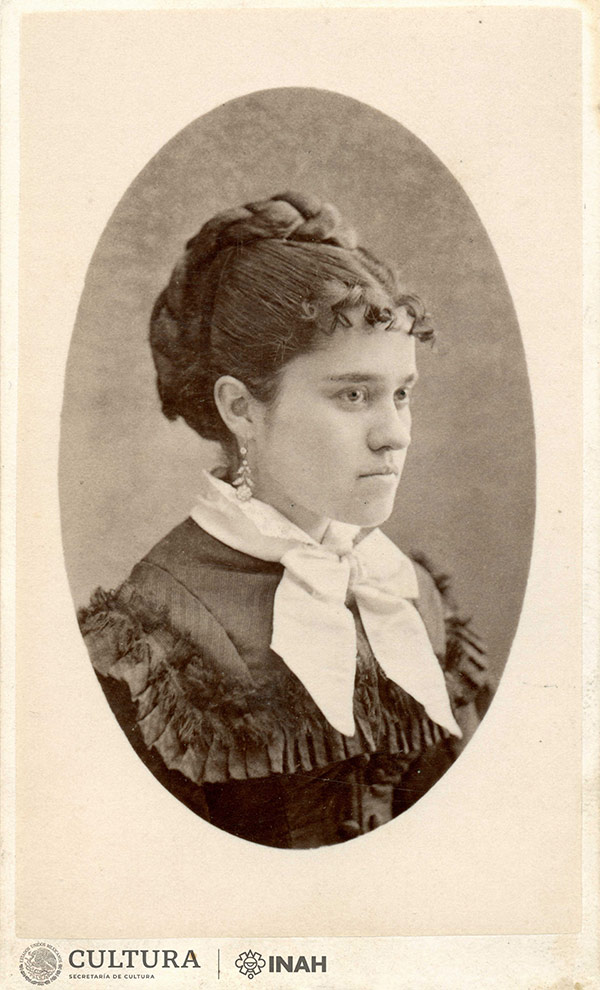
R. Bustamente
1880 Unidentified photographer
R. Bustamente
1880
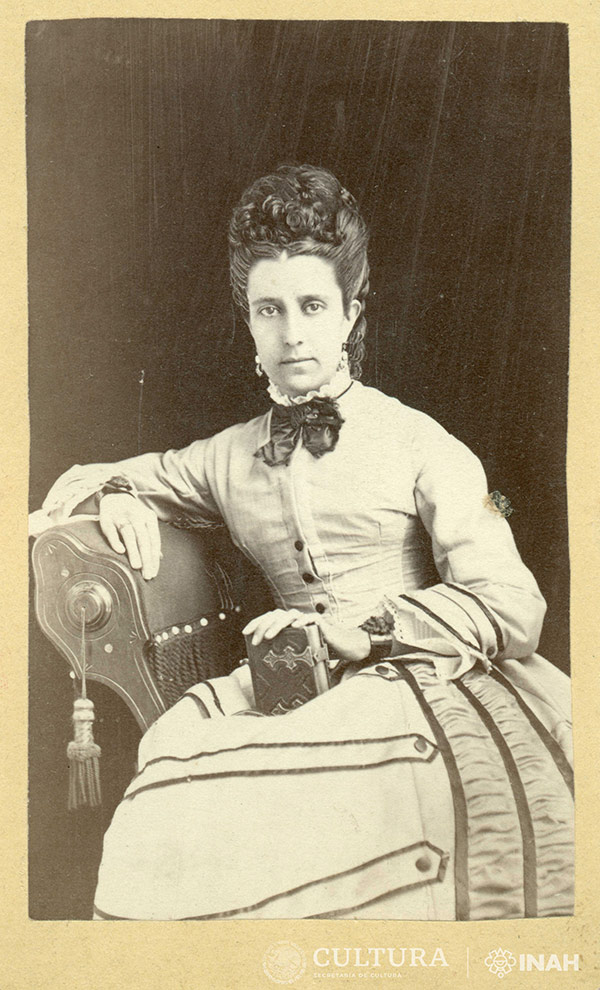
L. Frías
1877 Unidentified photographer
L. Frías
1877
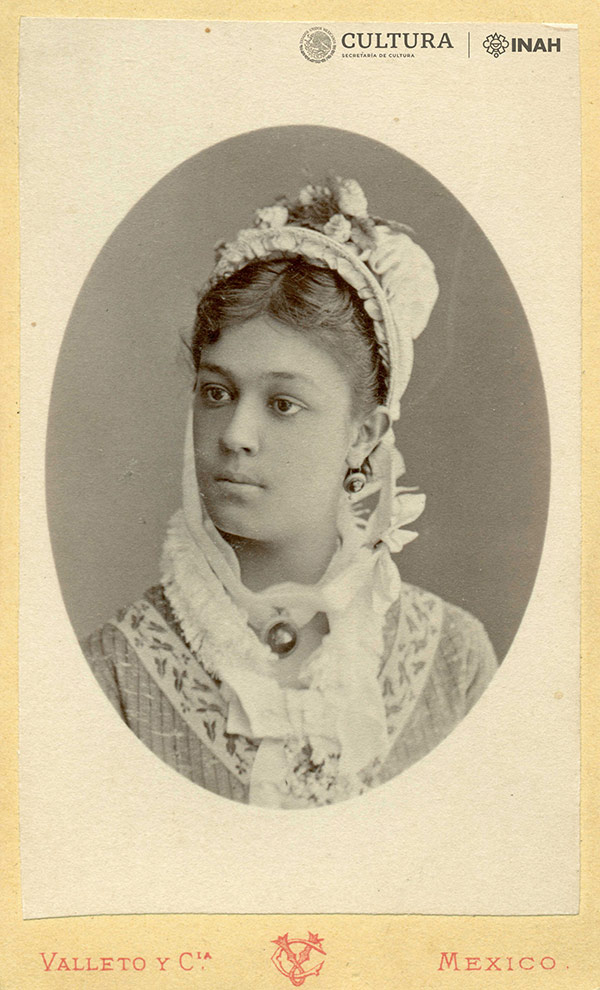
G.U.
1879 Valleto y Cía
G.U.
1879
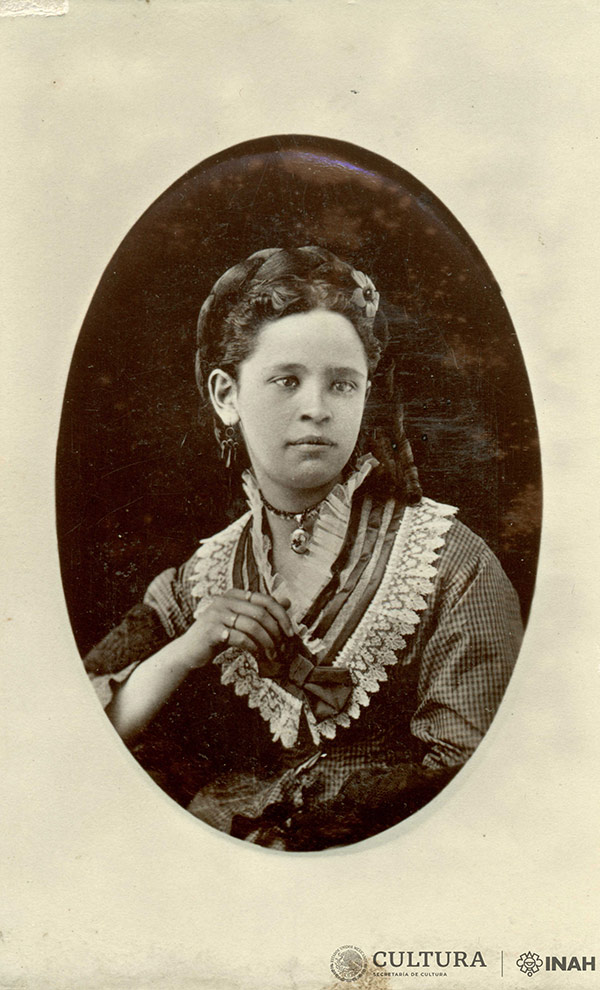
Santos González
1879 Unidentified photographer
Santos González
1879
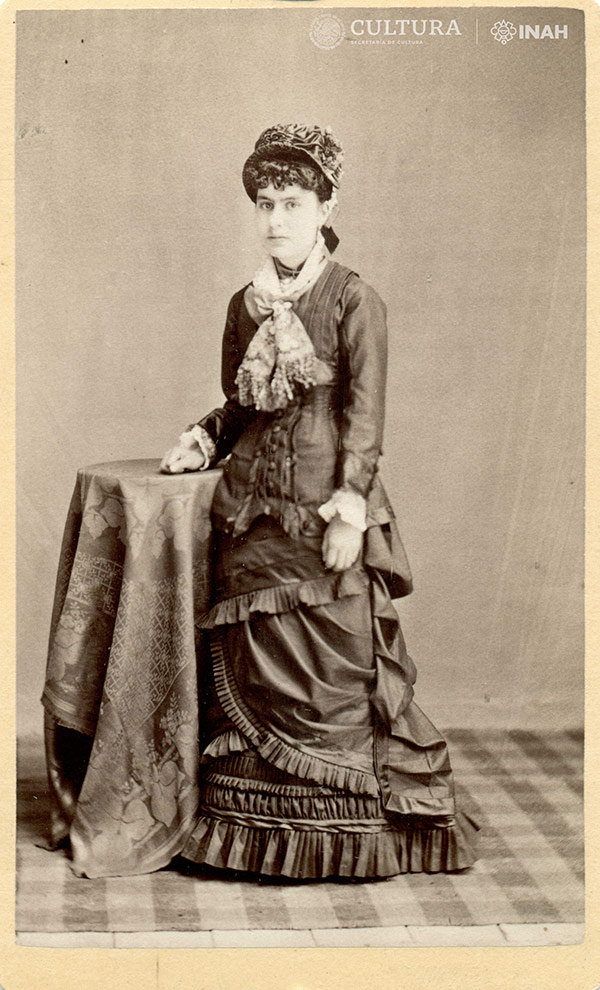
Trinidad Hinojos
1882 Bartolomé Velarde Seoane
Trinidad Hinojos
1882
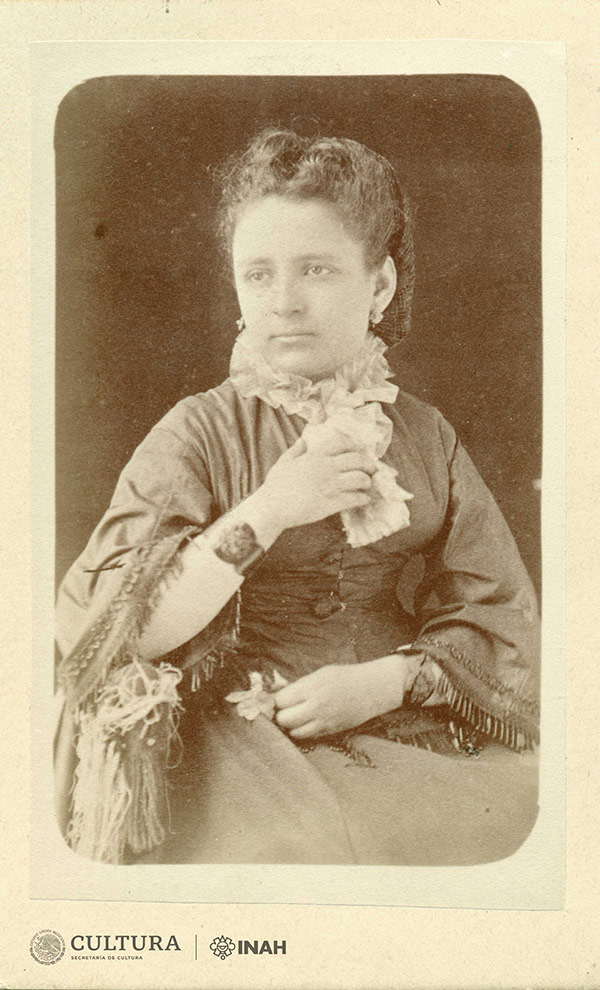
Jovencita sentada
ca. 1880 Unidentified photographer
Young girl sitting
ca. 1880
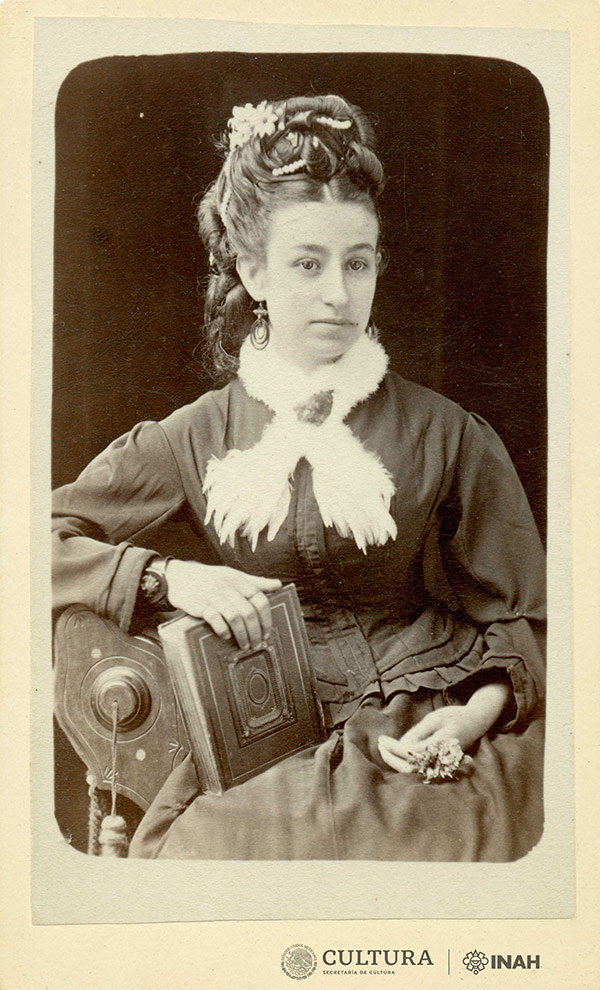
Concepción de la O
1876 Unidentified photographer
Concepción de la O
1876
Álbum fotográfico
ca. 1885
Photo Album
ca. 1885
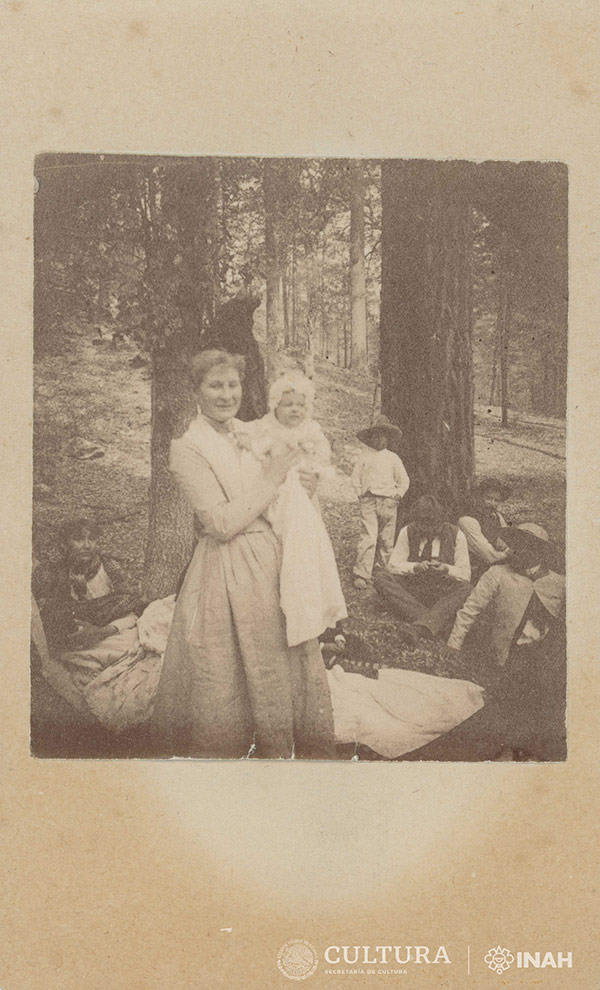
Grupo en día de campo
ca. 1900 Unidentified photographer
Group on picnic
ca. 1900
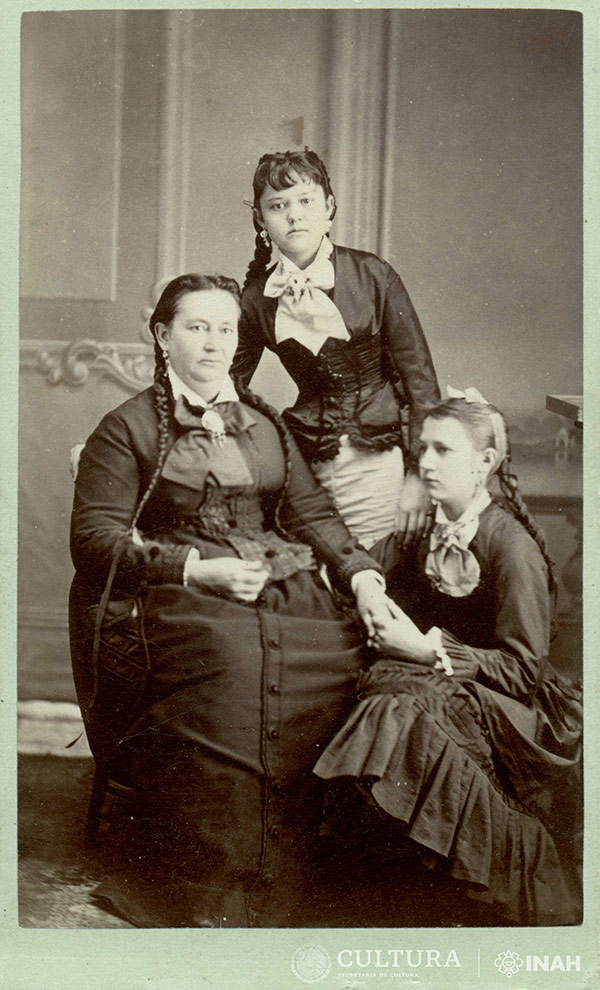
Eulalia P. de Moye, Enriqueta y Emilia Moye
1880 Bartolomé Velarde Seoane
Eulalia P. de Moye, Enriqueta and Emilia Moye
1880
Álbum fotográfico de María Josefa Irigoyen Terrazas
ca. 1885
María Josefa Irigoyen Terrazas' Photo Album
ca. 1885
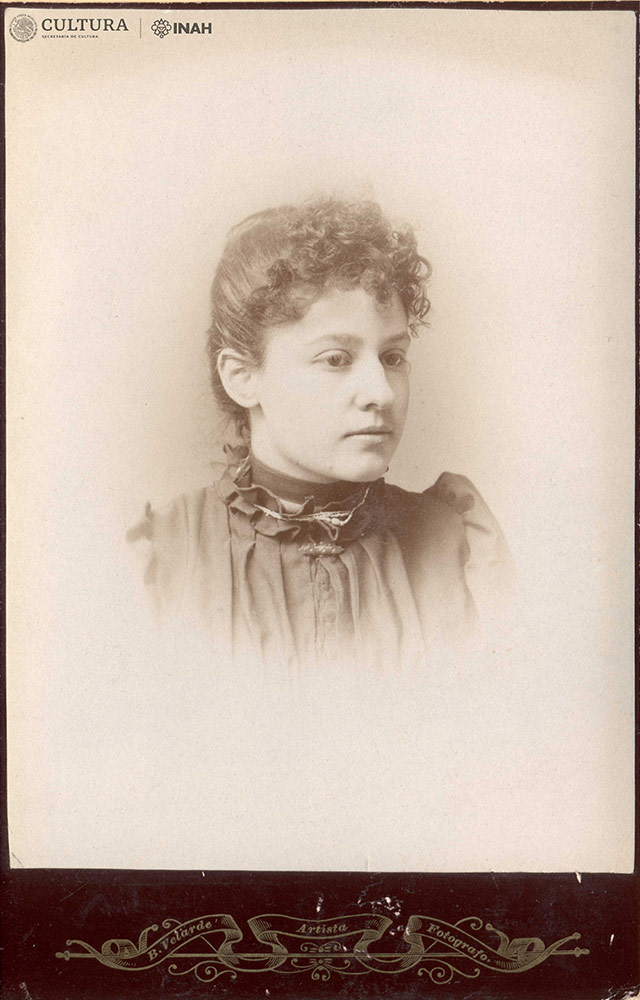
Elodia Irigoyen Terrazas
1894 Bartolomé Velarde Seoane
Elodia Irigoyen Terrazas
1894
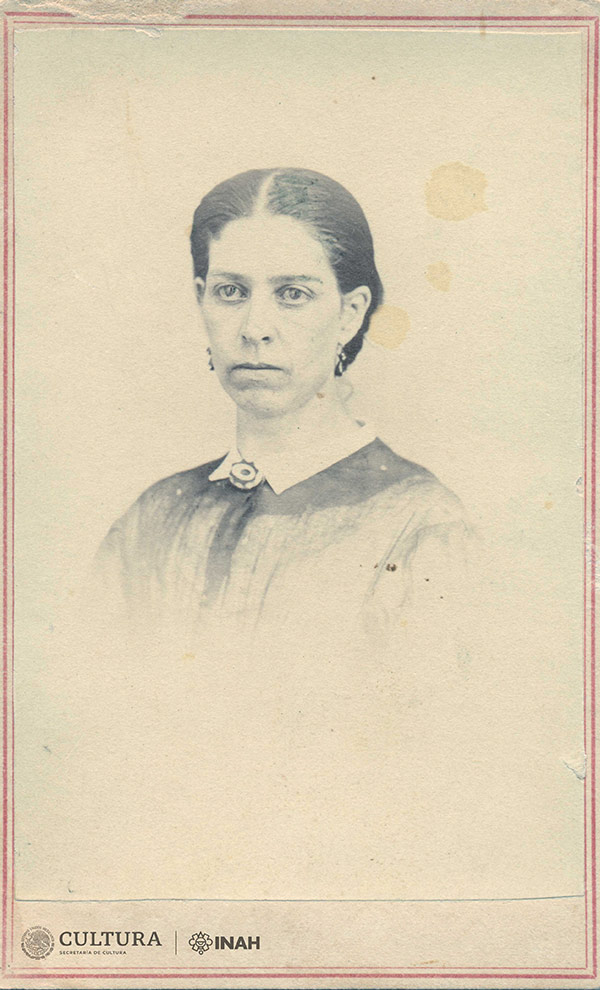
Josefa Terrazas de Irigoyen
1869 Nicholas Brown & son
Josefa Terrazas de Irigoyen
1869
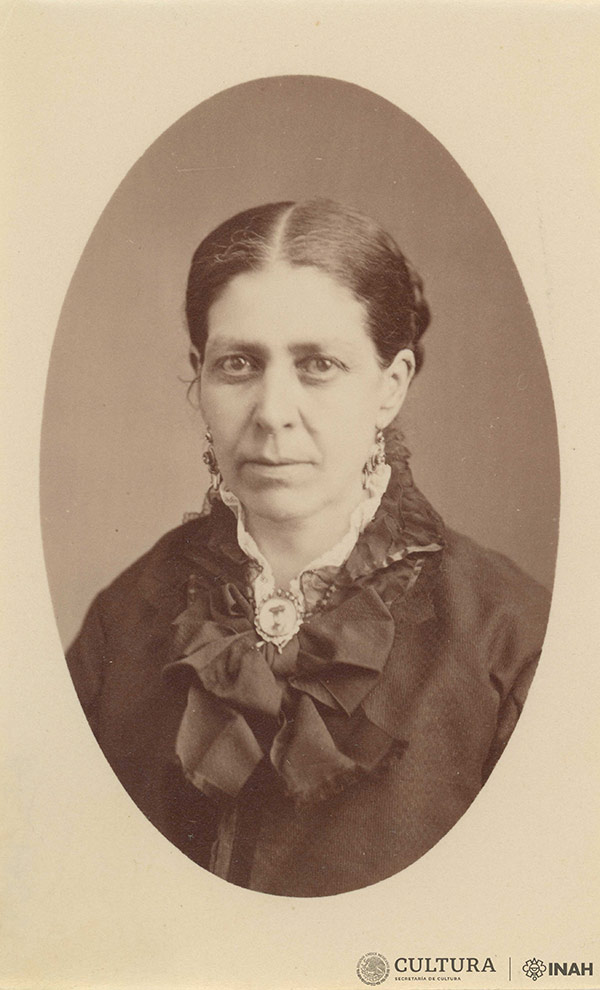
Josefa Terrazas de Irigoyen
ca. 1895 Unidentified photographer
Josefa Terrazas de Irigoyen
ca. 1895
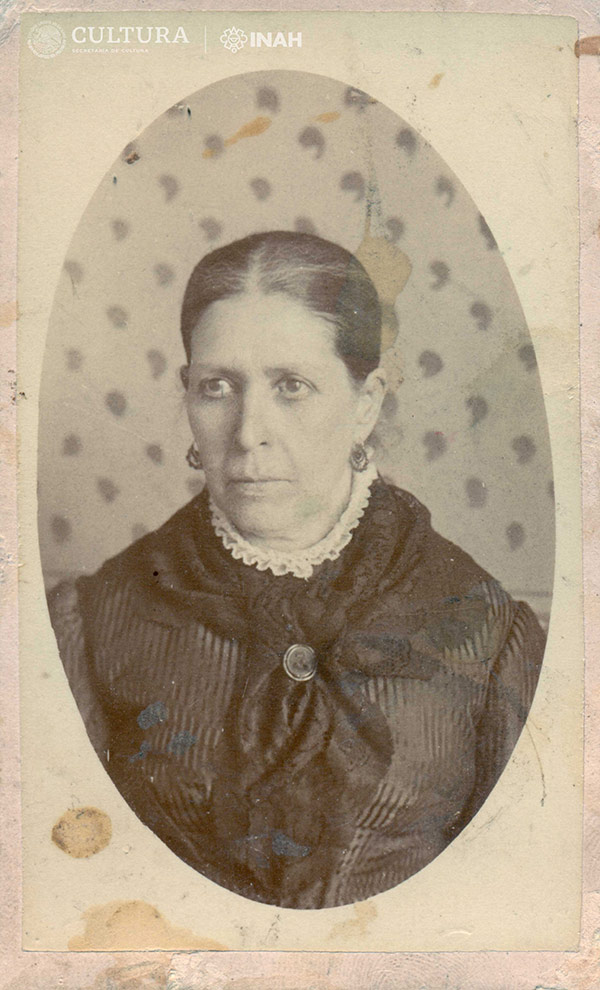
Josefa Terrazas de Irigoyen
ca. 1900 L. Irigoyen
Josefa Terrazas de Irigoyen
ca. 1900
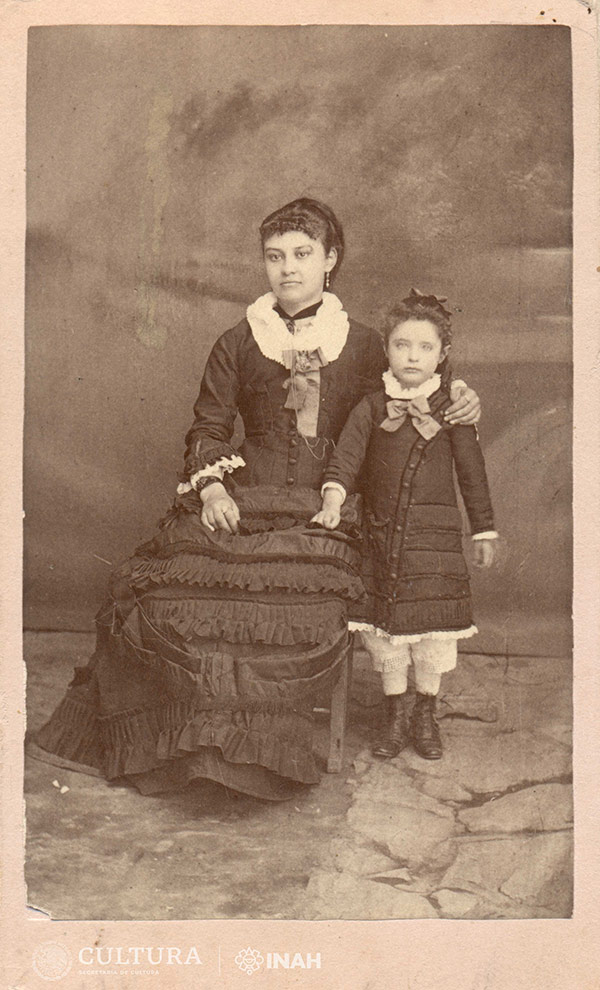
Guadalupe Chávez de Perea
1888 Fabián Revilla
Guadalupe Chávez de Perea
1888
Otras fotografías
Other Photos
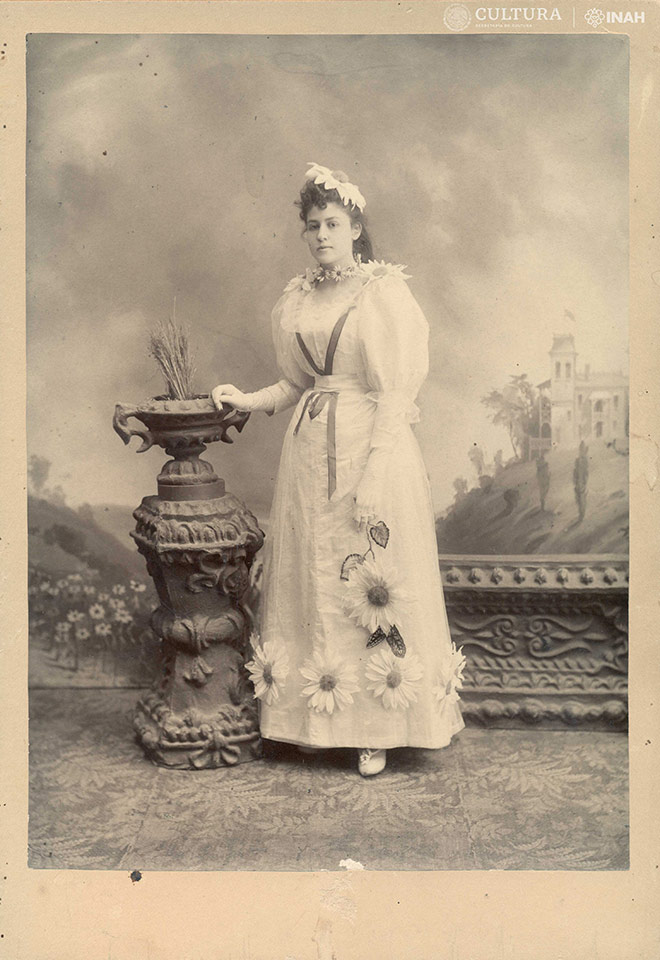
Elodia Irigoyen Terrazas
1895 Bartolomé Velarde Seoane
Elodia Irigoyen Terrazas
1895
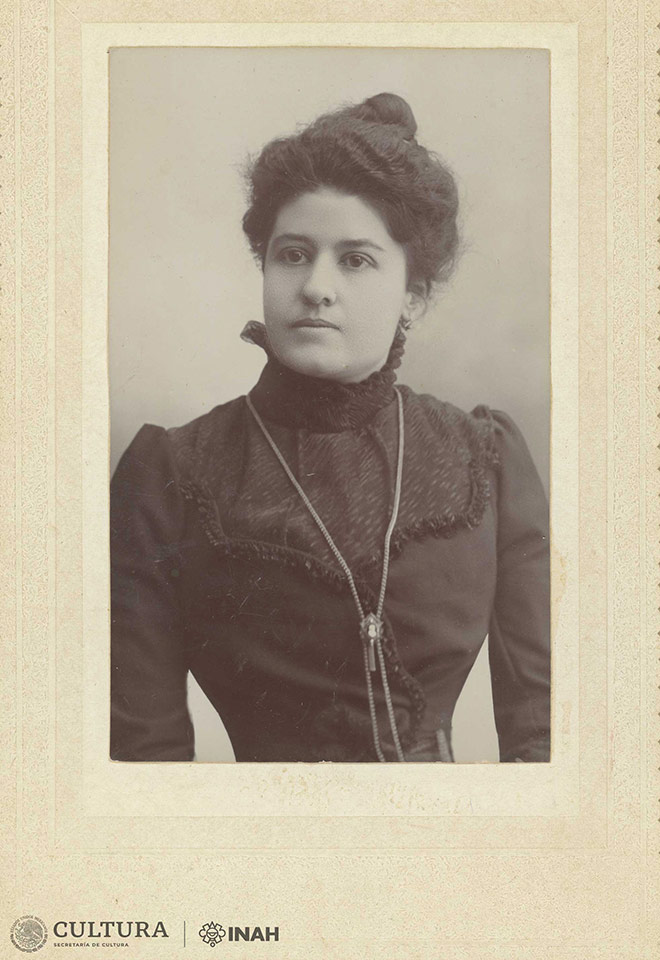
Elodia Irigoyen Terrazas
1900 Unidentified photographer
Elodia Irigoyen Terrazas
1900
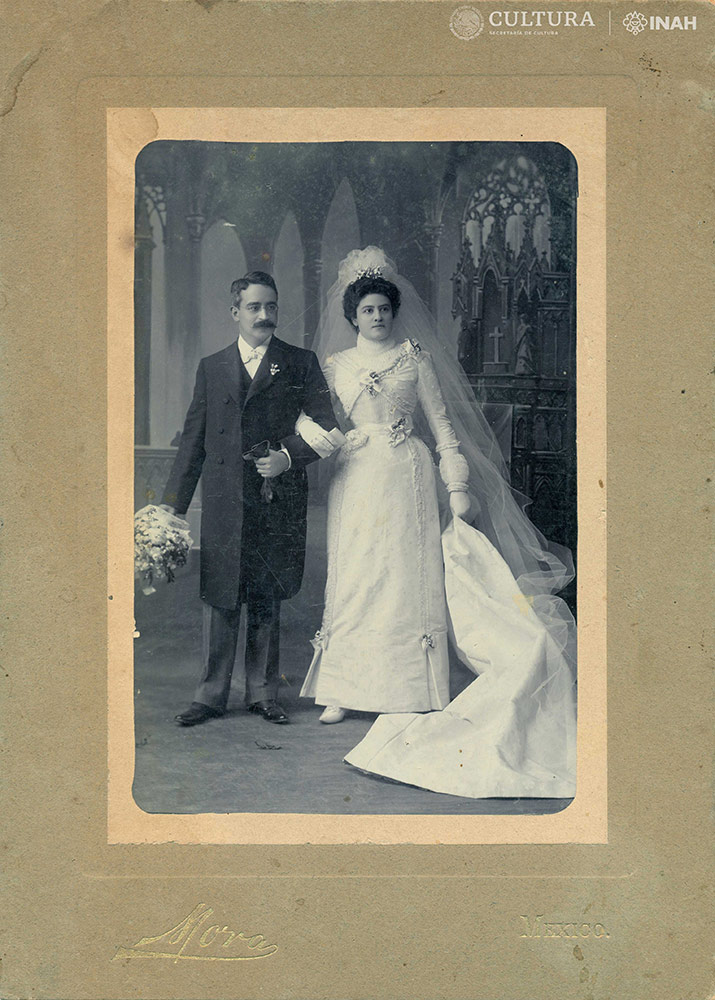
Benito Ortiz Córdova y Elodia Irigoyen Terrazas
1901 Octaviano de la Mora
Benito Ortiz Córdova and Elodia Irigoyen Terrazas
1901
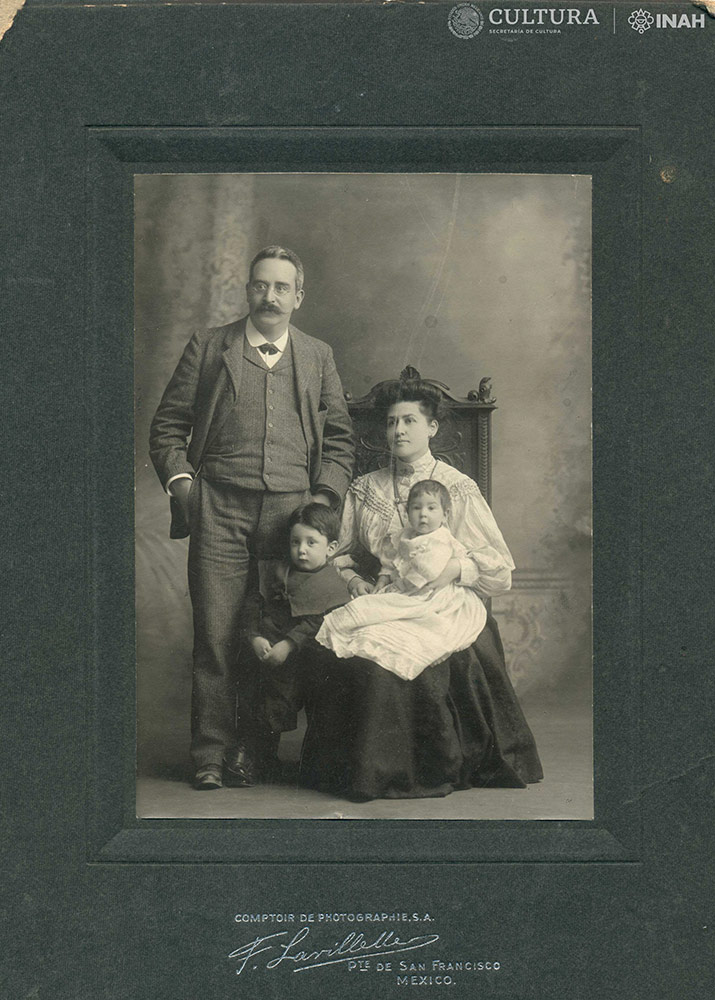
Familia Ortiz Irigoyen
ca. 1905 Françoise Lavillette
Ortiz Irigoyen family
ca. 1905
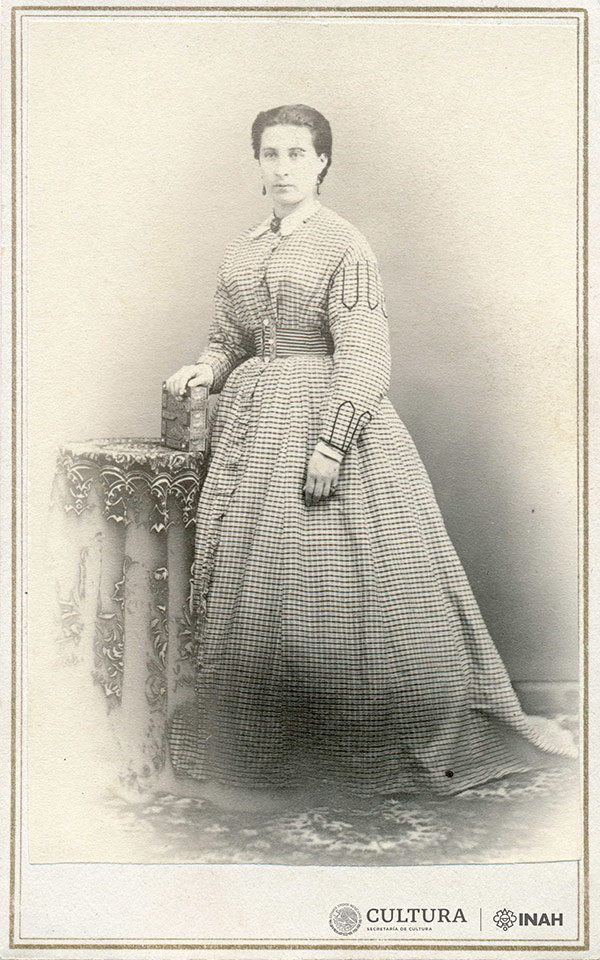
Mujer con álbum
ca. 1870 Nicholas Brown & son
Woman with photo album
ca. 1870
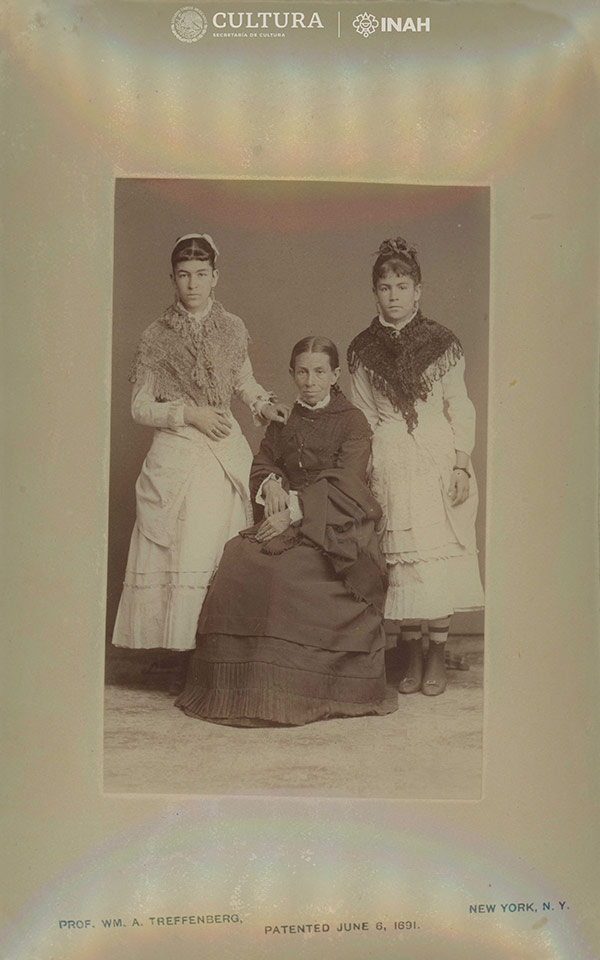
Mujeres
ca. 1880 Unidentified photographer
Women
ca. 1880
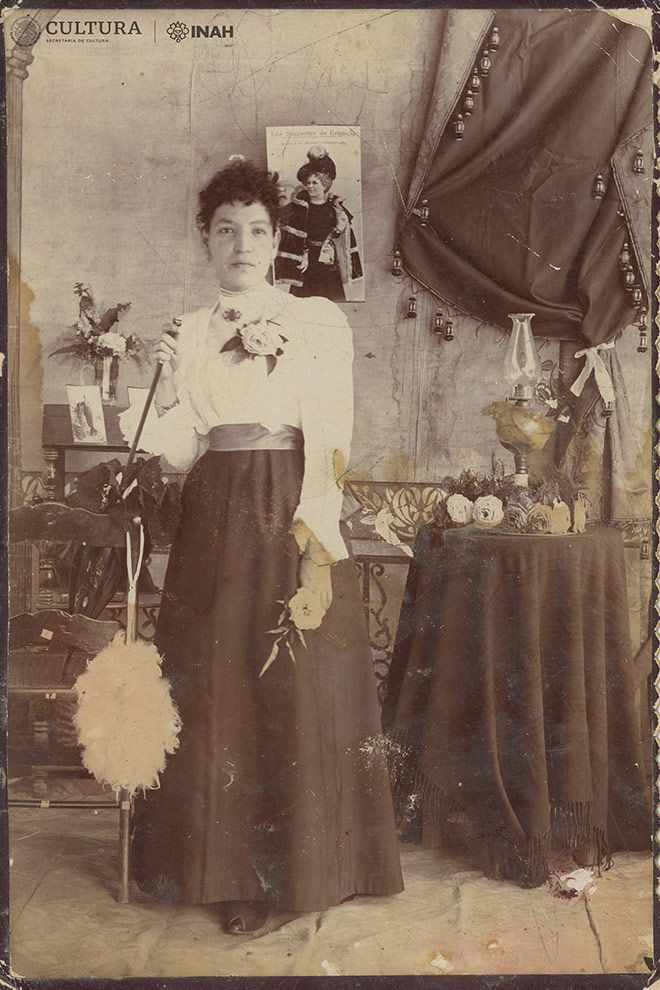
María C. Calderón
1902 Unidentified photographer
María C. Calderón
1902
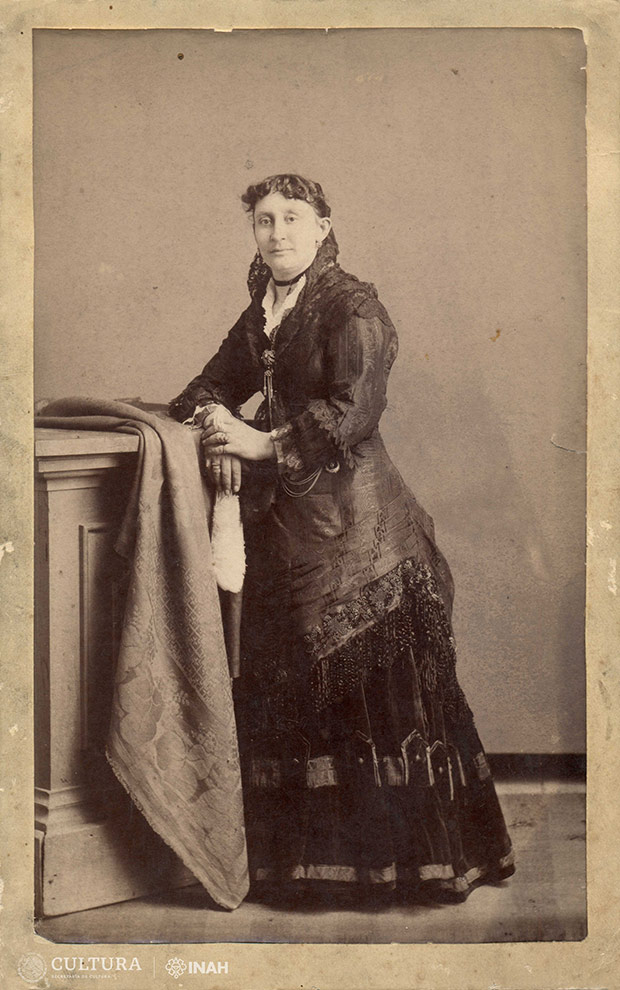
Carmen Nava y Armendáriz de San Martín
1883 Bartolomé Velarde Seoane
Carmen Nava y Armendáriz de San Martín
1883
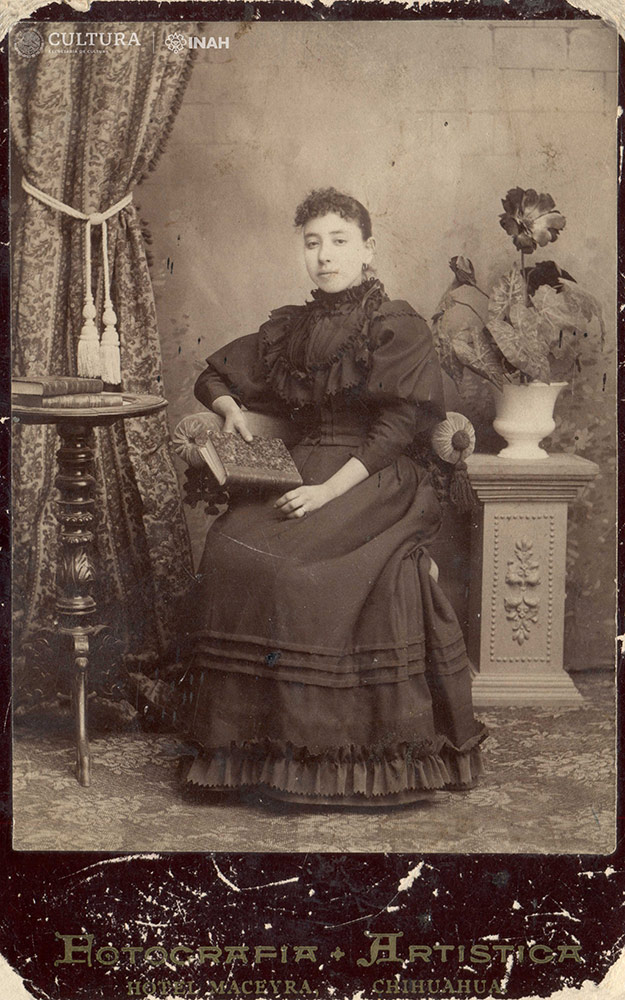
María Rico de Anderson
1895 J. Ornelas & Co. "Artistic Photography”
María Rico de Anderson
1895
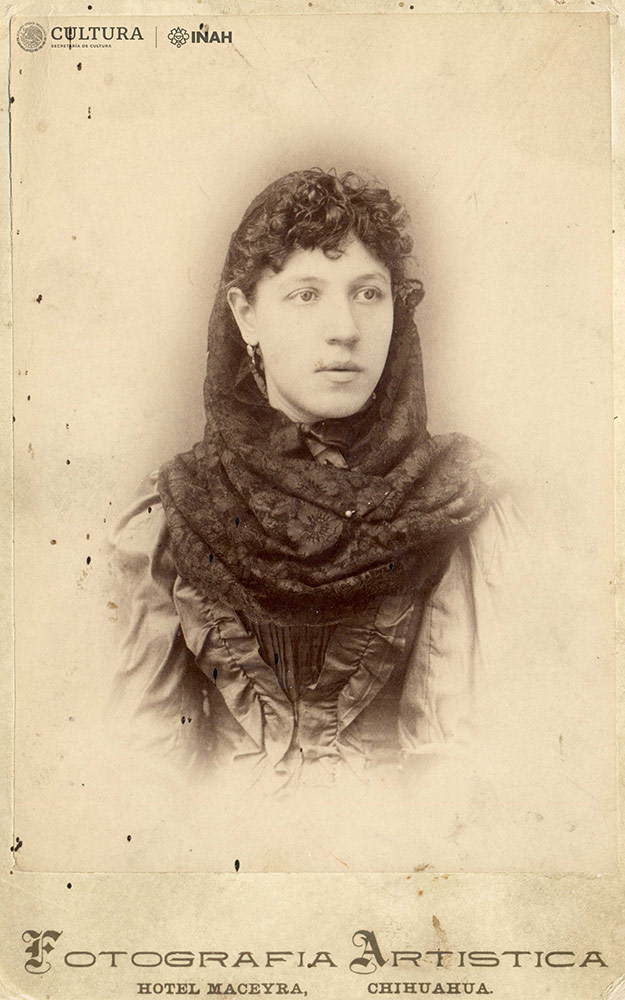
D.R.
1894 J. Ornelas & Co. "Artistic Photography”
D.R.
1894
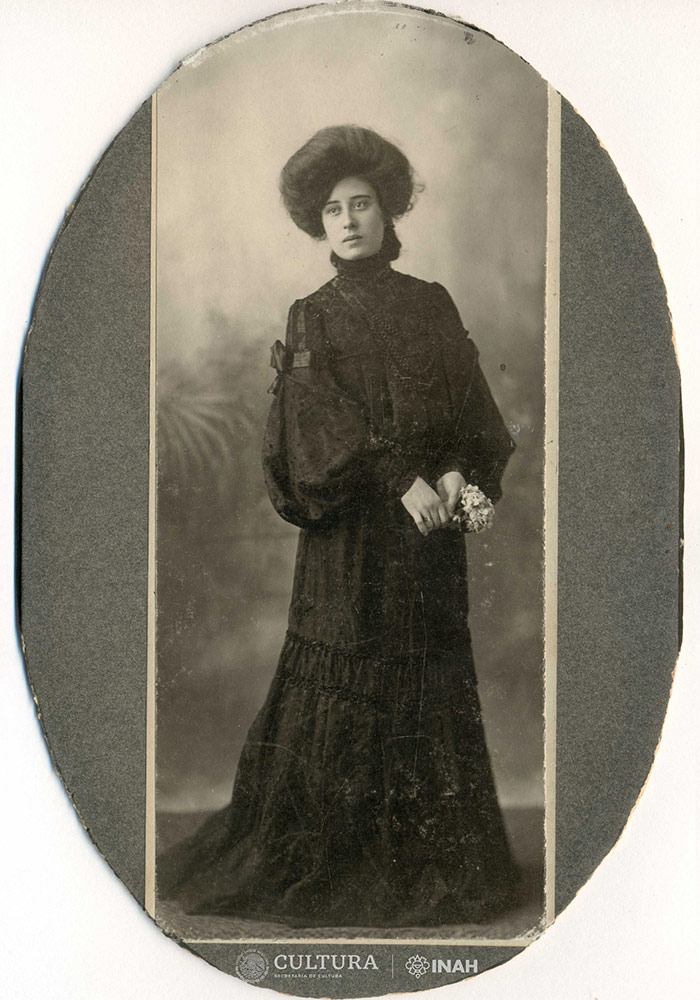
Señorita Alonso
ca. 1900 Unidentified photographer
Miss Alonso
ca. 1900
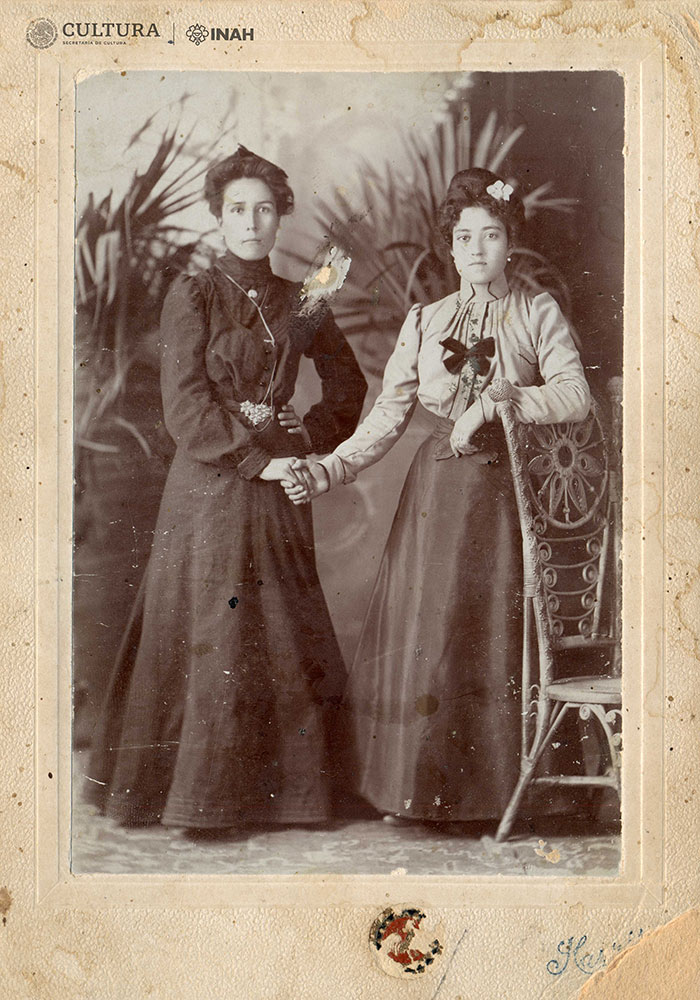
Luz Cano y Luz M. Paredes
ca. 1905 Charles C. Harris
Luz Cano and Luz M. Paredes
ca. 1905
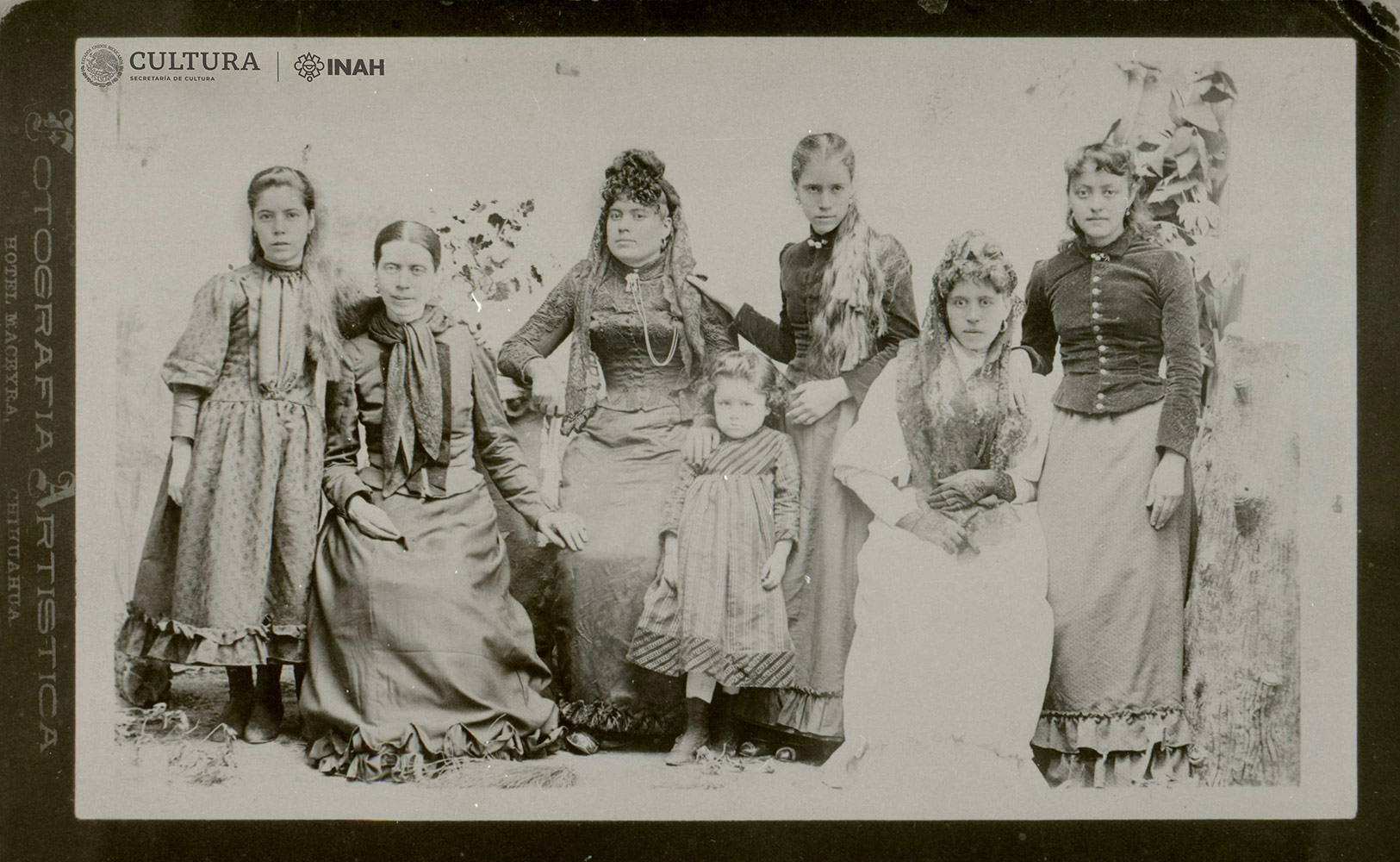
Familia Garnica Holguín
1890 J. Ornelas & Co. "Artistic Photography”
Garnica Holguín family
1890
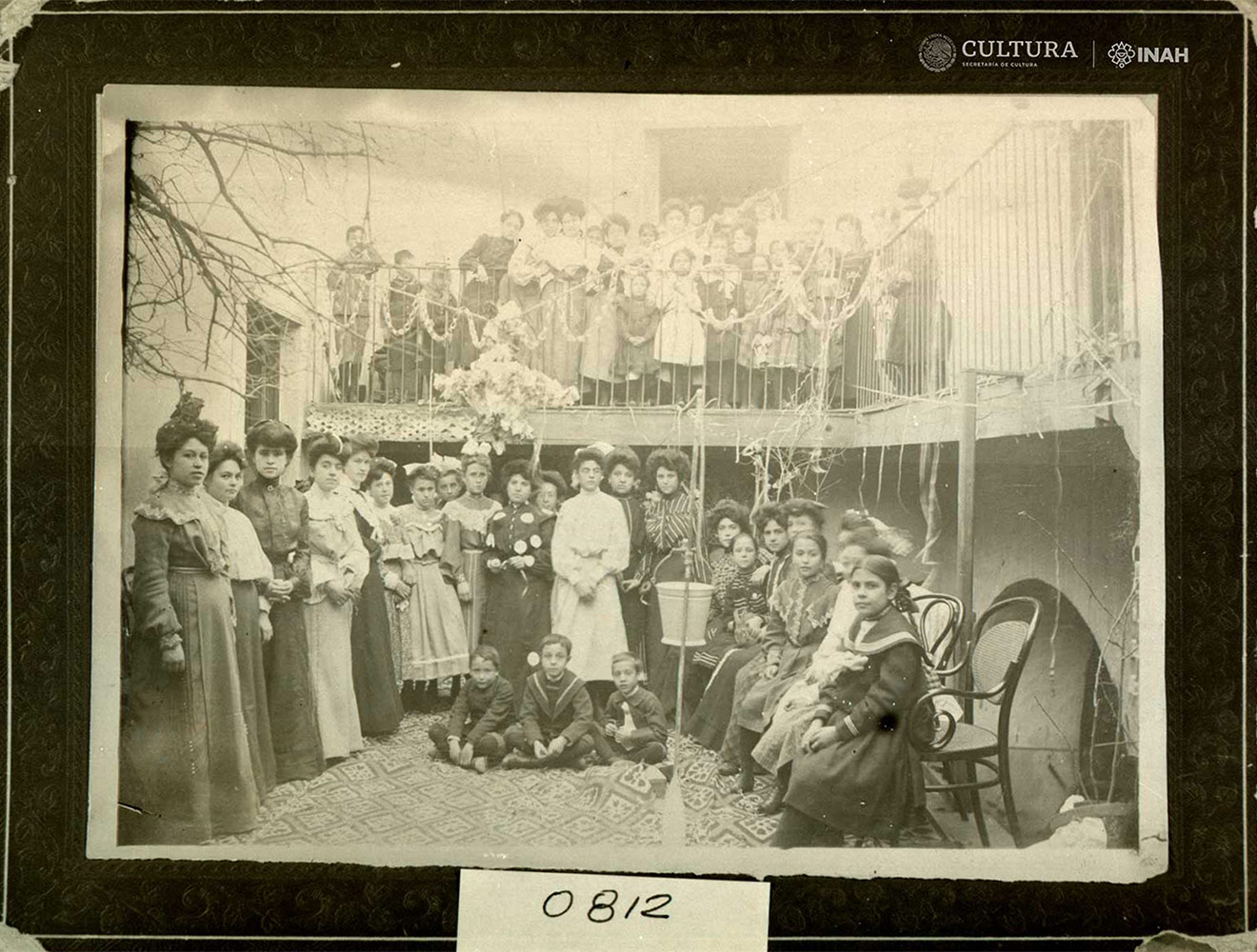
Fiesta de quince años de Adela Ríos
1904 Unidentified photographer
Adela Ríos' "Quince Años" party
1904
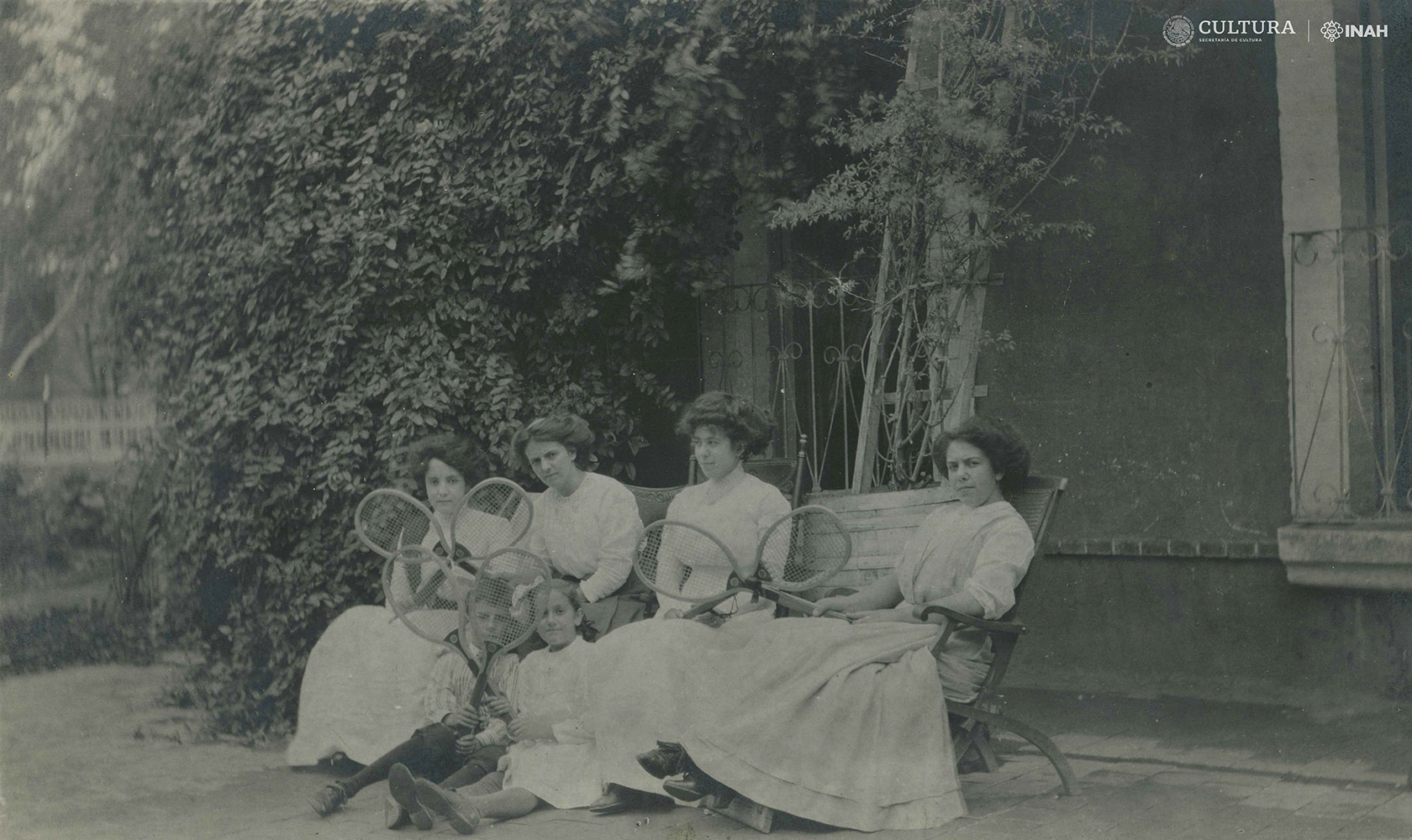
Mujeres con raquetas
ca.1905 Unidentified photographer
Women with racquets
ca.1905
Materiales de Museografía Extendida
Extended Museography System Materials
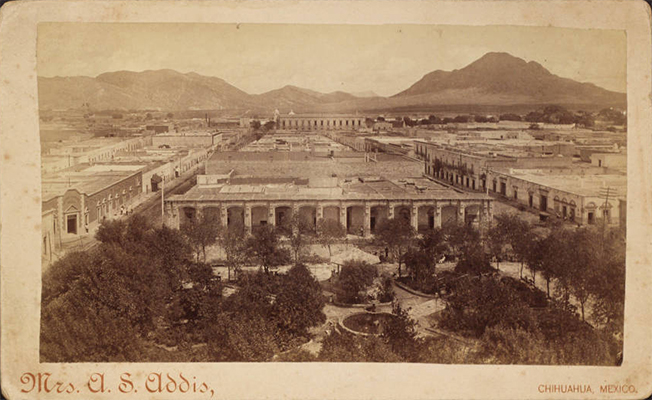
El Chihuahua de 1887
1887
Special Collections, The University of Arizona Sarah Hillis Short Addis
The Chihuahua of 1887
1887
Special Collections, The University of Arizona
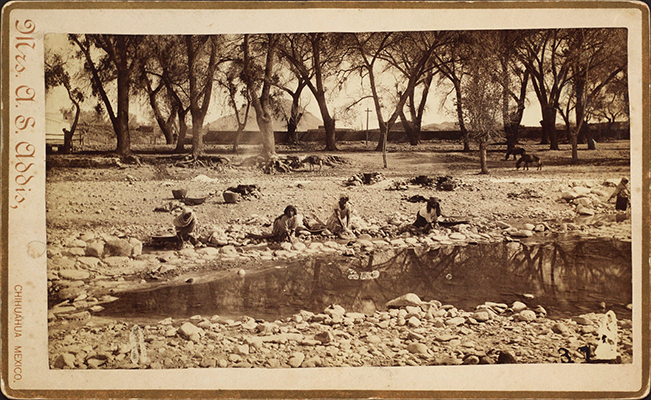
Mujeres indígenas lavando ropa
1887
Special Collections, The University of Arizona Sarah Hillis Short Addis
Indian women washing clothes
1887
Special Collections, The University of Arizona
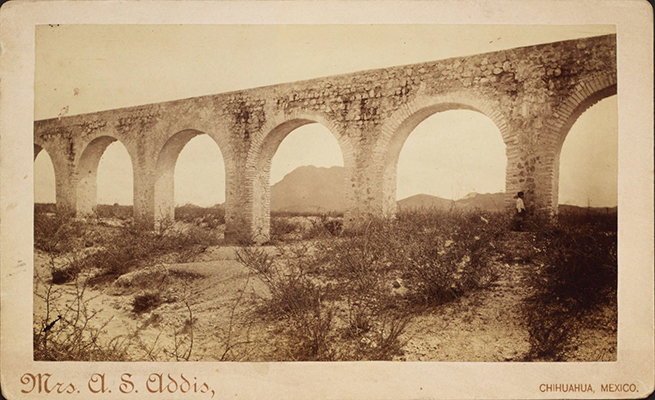
Acueducto en Chihuahua
1887
Special Collections, The University of Arizona Sarah Hillis Short Addis
Viaduct at Chihuahua
1887
Special Collections, The University of Arizona
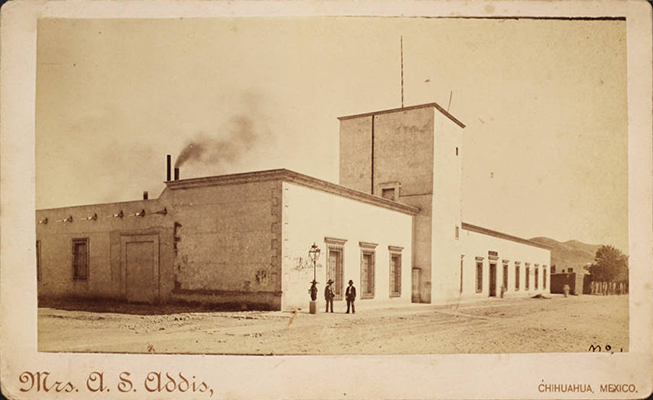
La casa de moneda en Chihuahua
1887
Special Collections, The University of Arizona Sarah Hillis Short Addis
The mint at Chihuahua
1887
Special Collections, The University of Arizona
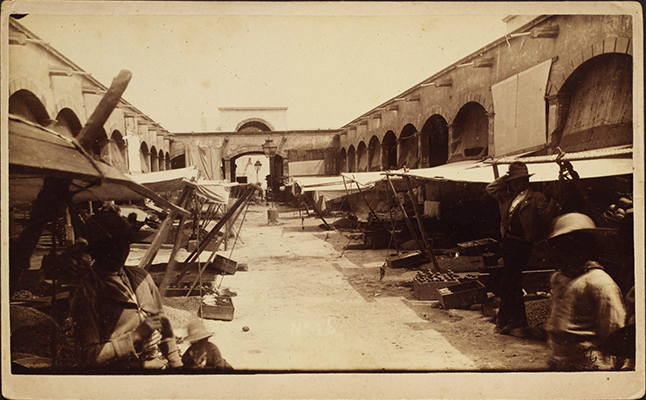
El mercado en Chihuahua
1887
Special Collections, The University of Arizona Sarah Hillis Short Addis
The market in Chihuahua
1887
Special Collections, The University of Arizona
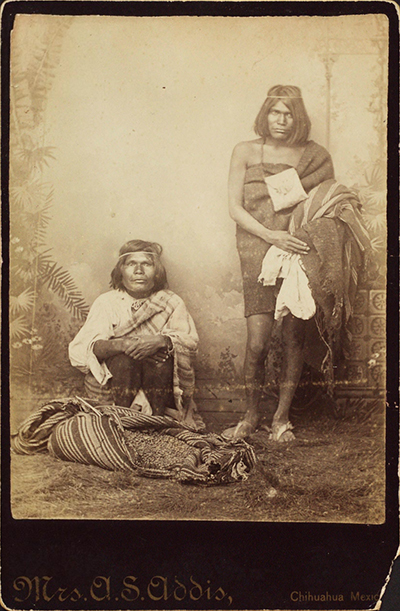
Indígenas de las montañas - los serranos - Tarahumara
1887
Special Collections, The University of Arizona Sarah Hillis Short Addis
Mountain indians - the serrano - Tarahumara
1887
Special Collections, The University of Arizona
Información y enlaces adicionales
Sin estudiar un poco la historia, al contrario de lo que pudiera parecer, la familia Addis-Short no fue, en lo absoluto, la familia feliz que uno llegaría a creer. Alfred dejó a Sarah y a sus dos hijos a su suerte, para irse a vivir y casarse con otra mujer, con quien también procreó, y a la que también abandonó. Después regresó con Sarah y sus hijos, aunque no se quedó con ellos por mucho tiempo, ya que se ausentaba durante largas temporadas para probar su suerte errante. La hija mayor, Yda, tampoco fue muy afortunada, aunque de ella existe más información, ya que estuvo involucrada en varias cuestiones legales, casi todas en torno a hombres. Ya que uno de ellos, con quien disputó un juicio de divorcio, era el propietario de un periódico en Santa Barbara, California, hay una gran cantidad de artículos al respecto. Fue una familia de personalidades fuertes y extraordinarias, de la cual se puediera escribir una interesantísima novela. No existen demasiados datos, aunque poco a poco va surgiendo nueva información.
El Museo del hogar de las familias Workman y Temple ha realizado un gran trabajo, y a continuación incluímos algunos enlaces a materiales de éste. También podemos encontrar excelente información en el libro de Peter E. Palmquist y Thomas R. Kailbourn Pioneer photographers from the Mississippi to the continental divide: a biographical dictionary, 1839–1865, publicado en 2005 por Stanford University Press; desgraciadamente, y para reforzar el contexto del marco de esta exposición, Marzo, Mes de la Mujer, la fotógrafa Sarah Short Addis no tiene una entrada para sí, y solamente se le menciona en los apartados de su padre, de su marido o de sus hermanos.
⚜
Yda Addis: Teenage Poet in Los Angeles, 1874
The Disappearance of Yda Hillis Addis
⚜
A.S. Addis en historiccamera.com
Additional information and resources
Without studying a little history, contrary to what it may seem, the Addis-Short family was not at all the happy family that one would believe. Alfred left Sarah and their two children to their fate, to go live with and marry another woman, with whom he again procreated, and whom he also abandoned. He later returned to Sarah and her children, although he did not stay with them for long, as he was usually away trying his wandering luck. The eldest daughter, Yda, was not very lucky either, although there is more information about her, since she was involved in several legal issues, almost all of them involving men. Since one of them, with whom she disputed a divorce trial, was the owner of a newspaper in Santa Barbara, California, there are a large number of articles about it. This was a family of strong and extraordinary personalities, about which a very interesting novel could be written. There is not much data, although little by little new information is emerging.
The Workman and Temple Family Homestead Museum has done some great work, and we've included some links to materials from it below. We can also find excellent information in Peter E. Palmquist and Thomas R. Kailbourn's book Pioneer photographers from the Mississippi to the continental divide: a biographical dictionary, 1839–1865, published in 2005 by Stanford University Press; unfortunately, and to reinforce the context of the framework of this exhibition, March, Women's Month, the photographer Sarah Short Addis does not have an entry for herself, and is only mentioned in the sections of her father, her husband or her male siblings.
⚜
Yda Addis: Teenage Poet in Los Angeles, 1874
The Disappearance of Yda Hillis Addis
⚜
A.S. Addis en historiccamera.com
Album & Memory
Curated by Jorge Meléndez Fernández
Materials from Fototeca INAH Centro Chihuahua
⚜
Extended Museography System developed and curated
by Galileo Velarde Vargas
Materials by kind courtesy of The University of Arizona
⚜

Álbum y memoria
Curaduría de Jorge Meléndez Fernández
Materiales de Fototeca INAH Centro Chihuahua
⚜
Curaduría y Sistema de Museografía Extendida
de Galileo Velarde Vargas
Materiales por amable cortesía de The University of Arizona
⚜

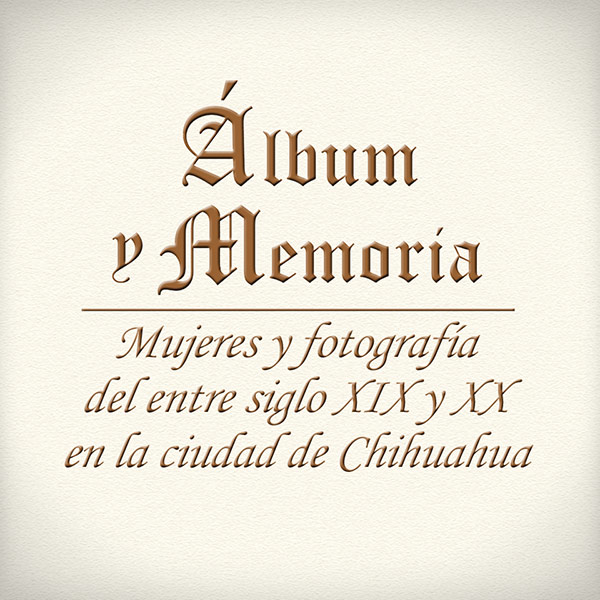
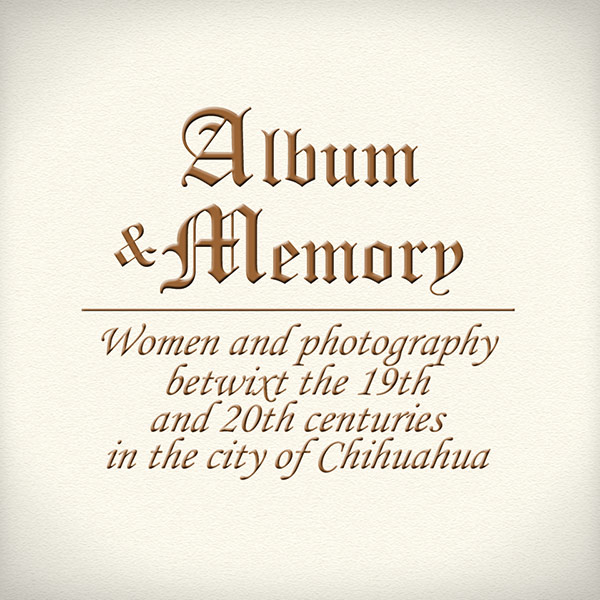
[...] algún lugar secreto de su cuerpo le enseña desde ahora a reclamar su parte
Valeria Luiselli, Los ingrávidos
[...] some secret place in her body teaches her from now on to claim her share of that which belongs to both of us, that which we take away from each other every day. The threads that hold us and separate us.
Valeria Luiselli, The Weightless
Durante el prolongado tiempo en que se introdujo la fotografía en la ciudad de Chihuahua, los usos y significaciones que algunas mujeres les dieron a sus retratos se observan a través de sus rastros. Algo de la cotidianeidad del entre siglo XIX y XX es aprehensible en las prácticas en torno a la fotografía, como huellas de los afectos y sus efectos en quienes hacían fotografías, se retrataban y eran fotografiadas.
During the long time in which photography was introduced in the city of Chihuahua, the uses and meanings that some women gave to their portraits are observed through their traces. Something of the everyday life of the 19th and 20th centuries is understandable in the practices around photography, as traces of affections and their effects on those who took photographs, had their portraits taken, and were photographed.
Cámara
Hacía los últimos años de la década de 1860 arribó a la ciudad de Chihuahua la familia Addis, compuesta por el matrimonio de Sarah Hillis Short (1850 - 1913) y Alfred Shea Addis, y sus hijos Judge e Yda. Alfred Shea operaba como cualquier otro fotógrafo itinerante de su época al seguir las caravanas comerciales hacia ciudades y comunidades donde pudiera ofrecer sus servicios. Los integrantes de la familia Addis ayudaban en el negocio, como cualquier galería fotográfica de propietario con esposa e hijos.
Camera
Towards the end of the 1860s, the Addis family arrived in the city of Chihuahua, made up of Sarah Hillis Short (1850 - 1913) and Alfred Shea Addis, and their children Judge and Yda. Alfred Shea operated like any other traveling photographer of his time by following trade caravans to cities and communities where he could offer his services. Members of the Addis family helped in the business, like any photo gallery owner with a wife and children.
Cámara
Sarah habría aprendido el oficio de su padre, el fotógrafo Thomas Joseph Short, antes de casarse con Alfred en 1856 y emprender la trashumancia que los traería a México entre 1867 y 1872. Las huellas de lo Addis no son del todo claras durante ese periodo, pero se sabe que estuvieron en Chihuahua y Mazatlán en varias ocasiones. Regresaron a Chihuahua a finales de 1882 a establecer la “Galería Fotográfica Americana”. No es casual, pues la reciente inauguración del segmento del Ferrocarril Central Mexicano que conectaba con Norteamérica, y luego con la Ciudad de México, posibilitó una modernización y un comercio fotográfico que no había en su primera visita de 1868.
Camera
Sarah would have learned the trade from her father, the photographer Thomas Joseph Short, before marrying Alfred in 1856 and undertaking the transhumance that would bring them to Mexico between 1867 and 1872. The traces of the Addis are not entirely clear during that period, but it is known that they were in Chihuahua and Mazatlán on several occasions. They returned to Chihuahua at the end of 1882 to establish the “American Photographic Gallery.” It is not a coincidence, since the recent inauguration of the segment of the Mexican Central Railway that connected with North America, and then with Mexico City, made possible a modernization and a photographic trade that did not exist on their first visit in 1868.
Cámara
La inesperada muerte de Alfred en 1886 dejó a Sarah al frente del estudio que se conocía como “Fotografía Americana”. Desde el número 2 de la calle Libertad siguió trabajando e identificándose como Mrs. A.S. Addis (Sra. Alfred Shea Addis), una costumbre social que respondía a la subordinación legal de la mujer al hombre y su rol como “cabeza de familia”. En su gabinete los Addis produjeron retratos y vistas urbanas, las imágenes fotográficas características de la modernidad. Sus retratos para las élites, registros de grupos escolares y venta de “tipos populares” materializaron nuevas formas de saber.
Camera
Alfred's unexpected death in 1886 left Sarah at the head of the studio that was known as “American Photography.” From number 2 Libertad Street she continued working and identifying herself as Mrs. A.S. Addis (Mrs. Alfred Shea Addis), a social custom that responded to the legal subordination of women to men and their role as “head of the family.” In their studio, the Addis produced portraits and urban views, the characteristic photographic images of modernity. His portraits for the elites, records of school groups, and sales of “popular types” materialized new ways of knowing.

Vista de la calle Libertad
ca.1890
Colección Paola Juárez / Reidezel Mendoza Sarah Hillis Short Addis
Libertad street
ca.1890
Paola Juárez / Reidezel Mendoza Collection

Vista de la avenida de las Quintas y alameda de Guadalupe
ca.1900 Sarah Hillis Short Addis (attributed)
Avenue of the Mansions and Guadalupe Promenade
ca.1900

Vista del mercado de "La Reforma"
ca.1890 Sarah Hillis Short Addis (attributed)
"La Reforma" Market
ca.1890

Interior del mercado de "La Reforma"
ca.1890 Sarah Hillis Short Addis (attributed)
"La Reforma" Market interior
ca.1890

Mujer junto a mesa
ca.1868 Sarah Hillis Short Addis (attributed)
Woman beside table
ca.1868

Mujer con flores y libro
ca.1901 Sarah Hillis Short Addis (attributed)
Woman with flowers and book
ca.1901

Laurencia Chávez
1889 Sarah Hillis Short Addis (attributed)
Laurencia Chávez
ca.1889

Ignacio Velázquez y Refugio A.
ca.1889 Sarah Hillis Short Addis (attributed)
Ignacio Velázquez and Refugio A.
ca.1889

Pareja con bebé
ca.1880 Alfred Shea Addis
Couple with baby
ca.1880

Familia McLean del Val
1893 Sarah Hillis Short Addis
McLean del Val family
1893

Concepción Güereque González
1886 Sarah Hillis Short Addis (attributed)
Concepción Güereque González
1886

Sarah Hillis Short Addis
Concepción Güereque González, Inés Güereque y Dolores González
ca. 1887
Sarah Hillis Short Addis
Concepción Güereque González, Inés Güereque y Dolores González
ca. 1887

Grupo de jovencitas
ca. 1885 Alfred Shea Addis
Group of young ladies
ca. 1885

Grupo escolar
ca. 1896 Sarah Hillis Short Addis
School group
ca. 1896

Ramón G. Márquez
1886 Sarah Hillis Short Addis
Ramón G. Márquez
1886

Sarah Hillis Short Addis (atribuida)
Pompeyo Ramos, Montserrat Alberto “cubanito” Pujol y Manuel Pomares simulan asalto
ca.1890
Sarah Hillis Short Addis (attributed)
Pompeyo Ramos, Montserrat Alberto “cubanito” Pujol and Manuel Pomares act out a mugging
ca.1890

Marcelo Hurtado y niño
1886 Sarah Hillis Short Addis
Marcelo Hurtado and child
1886
Álbum
Los álbumes fotográficos fueron artefactos de lujo especialmente diseñados inicialmente para resguardar cartes de visite bajo broches o cerradura. Este indicio de privacidad y el ámbito doméstico que habitaban las mujeres hicieron del álbum familiar un espacio de creación y resguardo, de expresión de su inteligencia e intuición, de su estilo cognitivo comprometido emocionalmente, relacional y orientado hacia los valores del cuidado.
Album
Photographic albums were luxury artifacts initially specially designed to protect cartes de visite under clasps or locks. This indication of privacy and the domestic environment that the women inhabited made the family album a space of creation and protection, of expression of their intelligence and intuition, of their cognitive style that was emotionally committed, relational and oriented towards the values of care.
Álbum
La cercanía y dependencia emocional mutua de la relación íntima entre madre e hija yacía en el corazón de este mundo femenino. La simpatía y comprensión de estas relaciones madre-hija posibilitaban el sistema de aprendizaje como ama de casa y la maternidad. Esta dependencia mutua y ese profundo afecto teñía el mundo de las redes de apoyo y los rituales. Entre estos ritos se encontraba ordenar y hojear el álbum familiar. Un espacio de posibilidad donde se despliega el poder creador de esta facultad altamente desarrollada en las mujeres.
Album
The closeness and mutual emotional dependence of the intimate relationship between mother and daughter lay at the heart of this feminine world. The sympathy and understanding of these mother-daughter relationships made the learning system as a housewife and motherhood possible. This mutual dependence and deep affection colored the world of support networks and rituals. Among these rituals was organizing and leafing through the family album. A space of possibility where the creative power of this highly developed faculty in women is displayed.
Álbum
Si bien, las colecciones de retratos sólo eran contempladas por aquellas personas a las que las propietarias de los álbumes seleccionaban por considerarlas dignas de compartir con ellas la colección de fotografías que tenían, las mujeres hilaron con ellas los rasgos distintivos de la esfera social a la que pertenecían en las páginas de sus álbumes y confeccionaron una memoria familiar que continuó las normas de comportamiento y los acuerdos culturales de los roles de género.
Album
Although the collections of portraits were only viewed by those people whom the owners of the albums selected as worthy of sharing with them the collection of photographs they had, the women wove with them the distinctive features of the social sphere to which they belonged in the pages of their albums and made a family memory that continued the norms of behavior and cultural agreements of gender roles.
Álbum fotográfico de Luisa de la O de Faudoa
1882
Luisa de la O de Faudoa's Photo Album
1882

U.O. Lomelín
1881 Unidentified photographer
U.O. Lomelín
1881

R. Bustamente
1880 Unidentified photographer
R. Bustamente
1880

L. Frías
1877 Unidentified photographer
L. Frías
1877

G.U.
1879 Valleto & Co.
G.U.
1879

Santos González
1879 Unidentified photographer
Santos González
1879

Trinidad Hinojos
1882 Bartolomé Velarde Seoane
Trinidad Hinojos
1882

Jovencita sentada
ca. 1880 Unidentified photographer
Young girl sitting
ca. 1880

Concepción de la O
1876 Unidentified photographer
Concepción de la O
1876
Álbum fotográfico
ca. 1885
Photo Album
ca. 1885

Grupo en día de campo
ca. 1900 Unidentified photographer
Group on picnic
ca. 1900

Eulalia P. de Moye, Enriqueta y Emilia Moye
1880 Bartolomé Velarde Seoane
Eulalia P. de Moye, Enriqueta and Emilia Moye
1880
Álbum fotográfico de María Josefa Irigoyen Terrazas
ca. 1885
María Josefa Irigoyen Terrazas' Photo Album
ca. 1885

Elodia Irigoyen Terrazas
1894 Bartolomé Velarde Seoane
Elodia Irigoyen Terrazas
1894

Josefa Terrazas de Irigoyen
1869 Nicholas Brown & son
Josefa Terrazas de Irigoyen
1869

Josefa Terrazas de Irigoyen
ca. 1895 Unidentified photographer
Josefa Terrazas de Irigoyen
ca. 1895

Josefa Terrazas de Irigoyen
ca. 1900 L. Irigoyen
Josefa Terrazas de Irigoyen
ca. 1900

Guadalupe Chávez de Perea
1888 Fabián Revilla
Guadalupe Chávez de Perea
1888
Otras fotografías
Other Photos

Elodia Irigoyen Terrazas
1895 Bartolomé Velarde Seoane
Elodia Irigoyen Terrazas
1895

Elodia Irigoyen Terrazas
1900 Unidentified photographer
Elodia Irigoyen Terrazas
1900

Benito Ortiz Córdova y Elodia Irigoyen Terrazas
1901 Octaviano de la Mora
Benito Ortiz Córdova and Elodia Irigoyen Terrazas
1901

Familia Ortiz Irigoyen
ca. 1905 Françoise Lavillette
Ortiz Irigoyen family
ca. 1905

Mujer con álbum
ca. 1870 Nicholas Brown & son
Woman with photo album
ca. 1870

Mujeres
ca. 1880 Unidentified photographer
Women
ca. 1880

María C. Calderón
1902 Unidentified photographer
María C. Calderón
1902

Carmen Nava y Armendáriz de San Martín
1883 Bartolomé Velarde Seoane
Carmen Nava y Armendáriz de San Martín
1883

María Rico de Anderson
1895 J. Ornelas & Co. "Artistic Photography”
María Rico de Anderson
1895

D.R.
1894 J. Ornelas & Co. "Artistic Photography”
D.R.
1894

Señorita Alonso
ca. 1900 Unidentified photographer
Miss Alonso
ca. 1900

Luz Cano y Luz M. Paredes
ca. 1905 Charles C. Harris
Luz Cano and Luz M. Paredes
ca. 1905

Familia Garnica Holguín
1890 J. Ornelas & Co. "Artistic Photography”
Garnica Holguín family
1890

Fiesta de quince años de Adela Ríos
1904 Unidentified photographer
Adela Ríos' "Quince Años" party
1904

Mujeres con raquetas
ca.1905 Unidentified photographer
Women with racquets
ca.1905
Materiales de Museografía Extendida
Extended Museography System Materials

El Chihuahua de 1887
1887
Special Collections, The University of Arizona Sarah Hillis Short Addis
The Chihuahua of 1887
1887
Special Collections, The University of Arizona

Mujeres indígenas lavando ropa
1887
Special Collections, The University of Arizona Sarah Hillis Short Addis
Indian women washing clothes
1887
Special Collections, The University of Arizona

Acueducto en Chihuahua
1887
Special Collections, The University of Arizona Sarah Hillis Short Addis
Viaduct at Chihuahua
1887
Special Collections, The University of Arizona

La casa de moneda en Chihuahua
1887
Special Collections, The University of Arizona Sarah Hillis Short Addis
The mint at Chihuahua
1887
Special Collections, The University of Arizona

El mercado en Chihuahua
1887
Special Collections, The University of Arizona Sarah Hillis Short Addis
The market in Chihuahua
1887
Special Collections, The University of Arizona

Indígenas de las montañas - los serranos - Tarahumara
1887
Special Collections, The University of Arizona Sarah Hillis Short Addis
Mountain indians - the serrano - Tarahumara
1887
Special Collections, The University of Arizona
Información adicional
Sin estudiar un poco la historia, al contrario de lo que pudiera parecer, la familia Addis-Short no fue, en lo absoluto, la familia feliz que uno llegaría a creer. Alfred dejó a Sarah y a sus dos hijos a su suerte, para irse a vivir y casarse con otra mujer, con quien también procreó, y a la cual también abandonó. Después regresó con Sarah y sus hijos, aunque no se quedó con ellos por mucho tiempo, ya que se ausentaba durante largas temporadas para probar su suerte errante.
Additional information
Without studying a little history, contrary to what it may seem, the Addis-Short family was not at all the happy family that one would believe. Alfred left Sarah and their two children to their fate, to go live with and marry another woman, with whom he again procreated, and whom he also abandoned. He later returned to Sarah and her children, although he did not stay with them for long, as he was usually away trying his wandering luck.
Información adicional
La hija mayor, Yda, tampoco fue muy afortunada, aunque de ella existe más información, ya que estuvo involucrada en múltiples cuestiones legales, casi todas en torno a hombres. Debido a que uno de ellos, con quien disputó un juicio de divorcio, era el propietario de un periódico en Santa Barbara, California, hay una gran cantidad de artículos al respecto. Fue una familia de personalidades fuertes y extraordinarias, de la cual se puediera escribir una interesantísima novela. No existen demasiados datos, aunque poco a poco va surgiendo nueva información.
Additional information
The eldest daughter, Yda, was not very lucky either, although there is more information about her, since she was involved in multiple legal issues, almost all of them involving men. Due to the fact that one of them, with whom she disputed a divorce trial, was the owner of a newspaper in Santa Barbara, California, there are a large number of articles about it. This was a family of strong and extraordinary personalities, about which a very interesting novel could be written. There is not much data, although little by little new information is emerging.
Información adicional
El Museo del hogar de las familias Workman y Temple ha realizado un gran trabajo, y a continuación incluímos algunos enlaces a materiales de éste. También podemos encontrar excelente información en el libro de Peter E. Palmquist y Thomas R. Kailbourn Pioneer photographers from the Mississippi to the continental divide: a biographical dictionary, 1839–1865, publicado en 2005 por Stanford University Press; desgraciadamente, y para reforzar el contexto del marco de esta exposición, Marzo, Mes de la Mujer, la fotógrafa Sarah Short Addis no tiene una entrada para sí, y solamente se le menciona en los apartados de su padre, de su marido o de sus hermanos varones.
Additional information
The Workman and Temple Family Homestead Museum has done some great work, and we've included links to some of it's materials. We can also find excellent information in Peter E. Palmquist's and Thomas R. Kailbourn's book Pioneer photographers from the Mississippi to the continental divide: a biographical dictionary, 1839–1865, published in 2005 by Stanford University Press; unfortunately, and to reinforce the context of the framework of this exhibition, March, Women's Month, the photographer Sarah Short Addis does not have an entry for herself, and is only mentioned in the sections of her father, her husband or her male siblings.
Álbum y memoria
Curaduría de Jorge Meléndez Fernández
Materiales de Fototeca INAH Centro Chihuahua
⚜
Curaduría y Sistema de Museografía Extendida
de Galileo Velarde Vargas
Materiales por amable cortesía de The University of Arizona
⚜

Album & Memory
Curated by Jorge Meléndez Fernández
Materials from Fototeca INAH Centro Chihuahua
⚜
Extended Museography System developed and curated
by Galileo Velarde Vargas
Materials by kind courtesy of The University of Arizona
⚜

